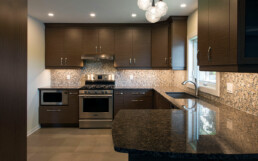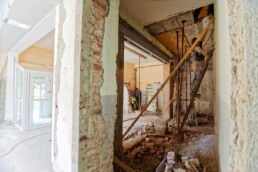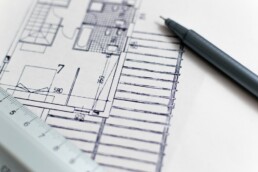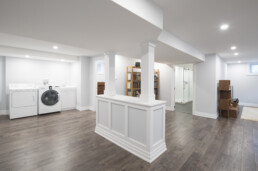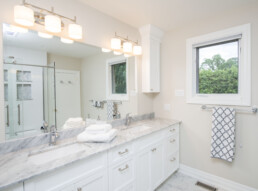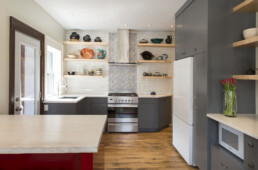Building the Custom Home of Your Dreams: Inspiration and Design
Planning and Designing Your Dream Home, From Budget to Floor Plans and Beyond
Where do you start when designing your dream home?
There are likely a hundred things running through your head when you start down the path to a custom home. It can seem overwhelming, but taking it step-by-step and building up inspiration can help.
Ultimately, your best bet is going to be getting involved with an architect or designer early on. Here's what you need to know about the entire process.
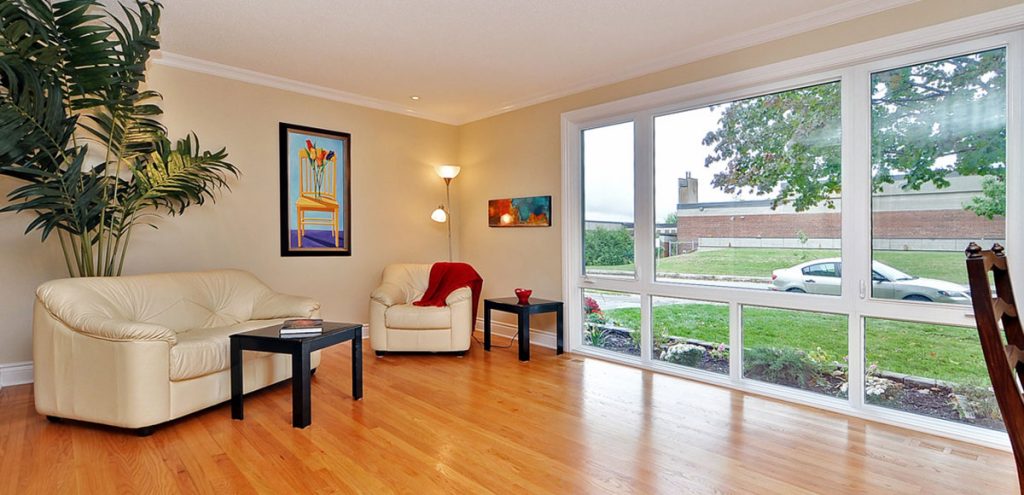
The Benefits of a Custom Home
Believe it or not, a custom home can actually be less expensive than purchasing an existing home.
When you purchase an existing home, you often need to renovate it to get it just the way you want it.
Whether you're putting in floors or just painting each room, that's both time and money being spent on getting the home "just right."
When you build a custom home, not only do you get exactly what you want, but you get what you want the first time.
Further, custom homes are also new homes. That means a new HVAC system, a new roof, and new appliances.
You won't need to worry about anything breaking down, the way you might need to worry about an older home.
Not only does that save you money, but it also saves you frustration.
Of course, it all starts with your vision for your home.
Designing Your Custom Home
Designing your dream home requires a lot of work, but it’s a rewarding process.
You likely already have a general idea of what you want in a property, but to create a custom home, you’ll need to develop a complete home design.
You can begin by collecting inspiration from magazines, the internet, and television shows.
Here are a few things to consider when you start the design process:
Space for Your Family to Live and Grow In
The size of your property and its layout is going to be the first thing you need to decide on. Custom made homes can be built in any layout to match your lifestyle.
Many luxury homes today have an open floor plan, but there are decisions to be made such as whether to place a master bedroom on the first floor or the second floor, how many bedrooms and bathrooms to have, and whether to have multiple living spaces or “bonus rooms.”
Consider what you and your family need now and what you’ll need in the future. How much space will you need to live and grow in?
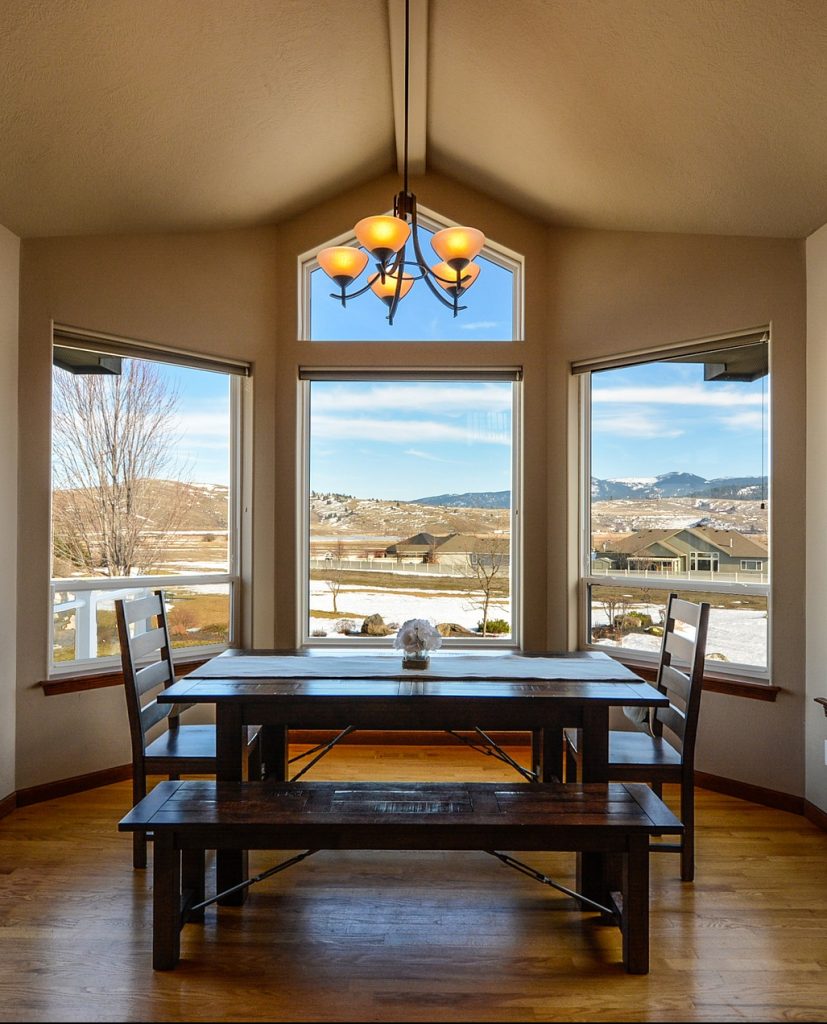
Unforgettable Kitchens
The kitchen is undoubtedly what makes a dream home a dream home for many people. The heart of the home, the kitchen is usually where people tend to congregate.
Still, everyone has a (strong!) opinion about what they want in their kitchen, from the colour of the granite to the style of the cabinets.
An older kitchen looks extremely dated, while newer kitchens may still not have the layout or amenities that you want.
Adding a Touch of Luxury
Custom home builders give you the opportunity to add a real touch of luxury with unique upgrades.
Maybe you want a specialized loft space, a built-in library, or a complete spa-experience bathroom.
All of these features can be added to your property during the design phase, depending on what's most important to you.
Building a custom home is often about prioritizing: you get exactly what you want, and can highlight them with amazing materials and craftsmanship.
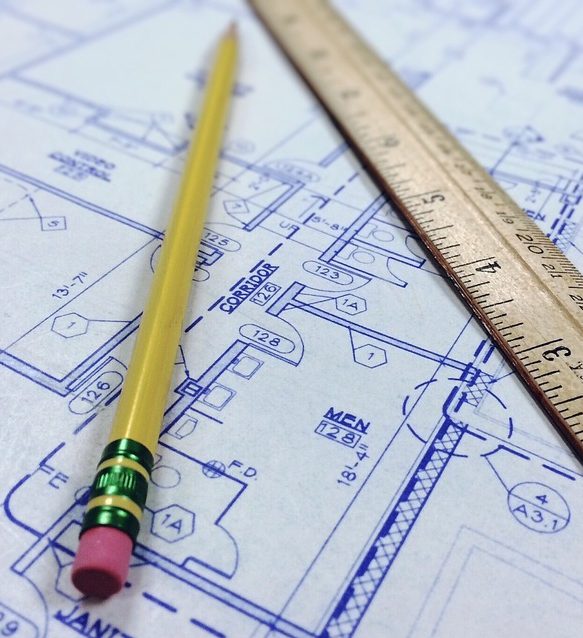
Should You Work with an Architect and/or Designer?
Let’s cut to the chase here: yes, you should absolutely work with an architect and designer for your custom home.
Your focus needs to be on the vision and feel of your home. When it comes to translating that to actual plans for construction, architects and designers are there to make it happen.
They’ll work with your custom home builders to bring that vision to life.
It’s up to these professionals to handle measurement details, zoning considerations, and the permit process.
Architects can create amazing spaces for you, nestling closets in the perfect spot, or finding great solutions for windows and layouts.
Designers, meanwhile, work to help create each space within your home, making recommendations on materials and styles.
You’ll work closely with them and your contractors to find the best options for your home.
Budgeting Guidelines
Setting a budget from the beginning is important. Start with your total budget, the total amount you’re willing to spend on your home, all-in.
Next, try breaking things down room-by-room.
Once you have a complete budget, you can prioritize how much you want to spend on bathrooms, kitchens, flooring, appliances, and the other critical aspects of the project.
This is another area in which professionals work closely with you because they can tell you how much every upgrade is going to cost.
You might want something fairly minor that's very expensive, or you might not realize that something that seems like a large and dramatic change actually won't cost much more at all.
Establishing a Timeline
Once you've figured out exactly what you want your property to look like and how much you want to spend, your custom home builder is going to establish a timeline for the build.
From the groundbreaking to the final walkthrough, you'll know exactly how long it'll take to create your dream home. If you're selling a property in order to buy your dream home, you may need to plan accordingly.
By working closely with an architect or designer, you can pull together different aspects of your inspiration and design into a workable budget and timeline. Knowing what you want is one thing, but it's a professional who will tell you how to achieve it.
To get started on your home design, contact Sunter Homes today.
6 Transformative Kitchen Design Tips
Get Inspired with These Tips to Make the Most of Your Kitchen
With the holidays right around the corner, you’re probably spending more and more time in the kitchen, either preparing speedy meals between seasonal activities or whipping up goodies to share with friends and family. As such, you’ve probably come to some stark truths about the kitchen design you’re working with.
You might have already had an idea about the limits you face in your kitchen, and perhaps you’ve even thought more about kitchen renovations to improve on those shortcomings.
It could be time to make some smart upgrades and to take a closer look at your kitchen’s bones. Renovations are an amazing way to revitalize the space and tailor its use to your needs, after all.
No matter where you’re at with your kitchen and how you’re feeling about it, though, there’s always room for inspiration! We’ve put together a few tips that can help you transform your kitchen into the space you’ve always wanted.
1 – Open Up Your Shelving
Open shelving is a love-it-or-hate-it kitchen feature. While some people see it as an amazing way to add chic functionality, others view it as a waste of space or a way to highlight clutter. The cost of kitchen cabinets is a factor too, as it’s not unusual for custom cabinetry to run as high as $1,200 per linear foot.
So, open or closed? As always, the reality is somewhere in between.
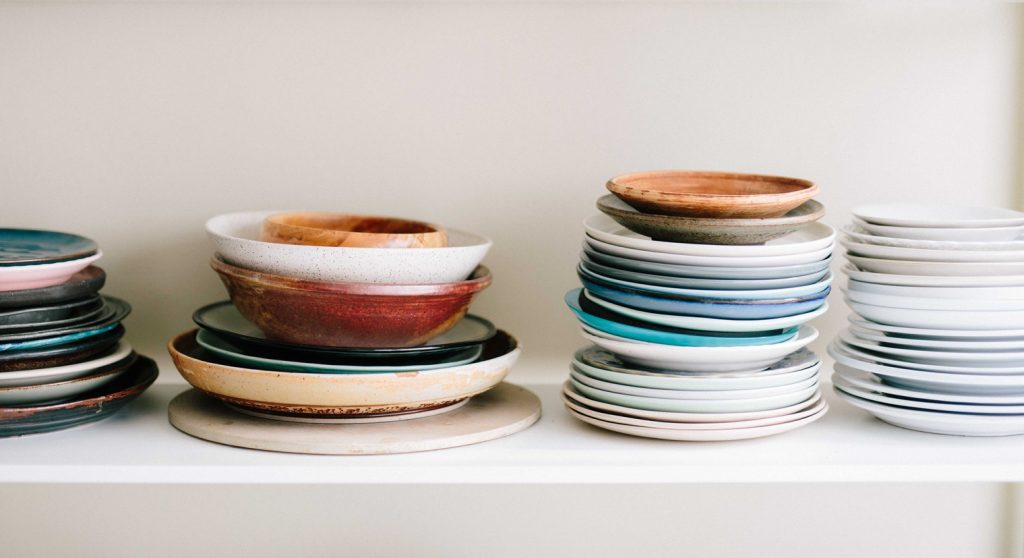
Open shelving has two chief uses:
- Displaying decorative or eye-catching items and dishes
- Putting your most-used items within easy reach
Chances are, if you’re feeling the constraints of your current kitchen, open shelving will help put your trusted spoons, pans, and spices close at hand so you can focus on cooking.
You’ll want to take some time to consider what you want to store and where you want to store it, and then you’ll have to consider shelving depth, the height of each shelf, and the gaps between your shelves. It’s about easy access, after all, so you don’t want to be struggling to carefully extricate items that were once hidden behind a cabinet door.
You could also add a rack to hang pots and pans from, giving you immediate access with a professional kitchen vibe.
If you don’t want to completely abandon the display potential of open shelving, consider mixing a few feature shelves in with your cabinetry. With the right kitchen design to tie it all together, this becomes a very sharp and stylish option.
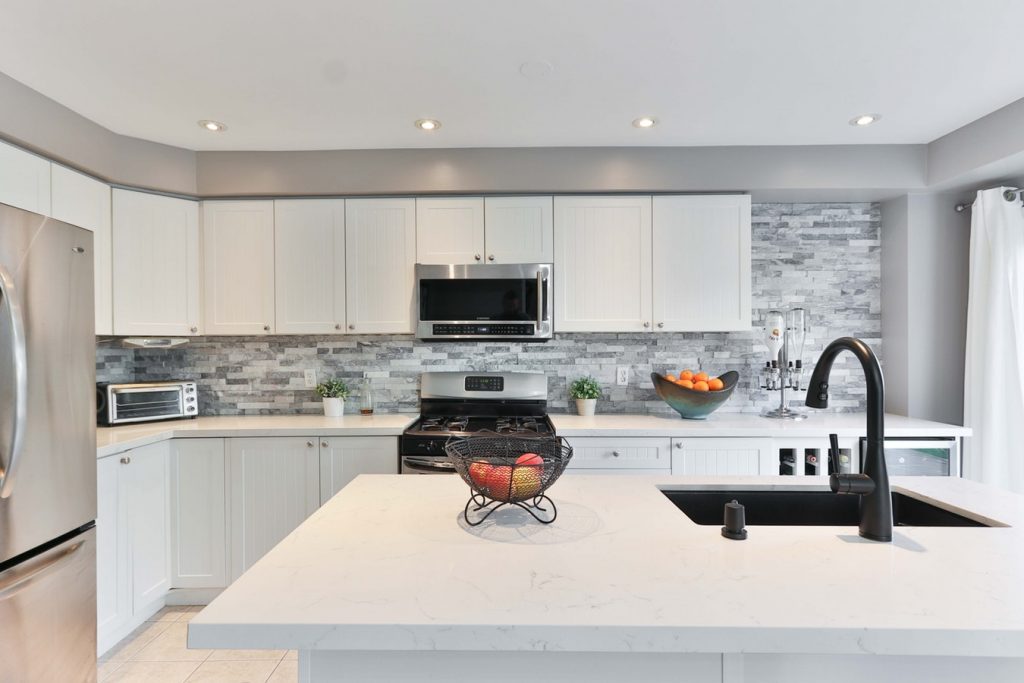
2 – Finding Space for Appliances
On that same note: appliances take up a lot of space.
The microwave sitting on the countertop is useful, but maybe you need a bit more space for the turkey at Thanksgiving. The solution? Hide the appliances, or incorporate them into the “infrastructure” of your kitchen.
One possible solution is building custom shelving or space within your cabinetry to accommodate some of these pieces. Slide-out stand mixer stations are a popular option, for example, and there are many microwave models designed to fit snugly into a range hood.
This is a challenging one, to be sure, but it usually means rethinking your space in a meaningful way, addressing your work triangle, its work zones, and considering other upgrades an additions, such as an island.
3 - Upgrading Countertops
Once you’ve freed up some space on your counters, what do you do with them?
Even if your approach to your kitchen is geared towards functionality, you should still consider upgrading your countertops. While these upgrades are typically thought of as purely aesthetic, most of your options offer a wealth of benefits beyond good looks:
- Quartz: Get a stone look with minimal maintenance! Quartz stands up to hot dishes, pots, knives, and even staining, but can still chip, which will need professional repairs.
- Granite: Every granite countertop is unique due to how it’s sourced, and granite stands up to heat, cuts, and scratches; plus, it looks great! The downside? You’ll have to reseal it regularly to prevent stains, and it’s as prone to chipping as quartz can be.
- Soapstone, Limestone, and Marble: Unique, uncommon looks are possible with these materials, and minor scratches and nicks can easily be sanded out. They’re (mostly) heat-resistant, too, but marble isn’t so great when the temperatures rise. The downside is soapstone is really easy to damage, and staining can be tough to deal with.
- Butcher Block: Butcher block is easy to install and repair, and with some varnish can stand up to stains, no problem. It’s a classic warm look with tons of practical functionality, but you’ll need to care for your countertops regularly to maintain them.
- Laminate: Laminates look better than they used to, and they’re a great low-cost option that’s easy to install. Depending on what you buy, laminate countertops can be heat-resistant and clean easily, but knives and scratches will permanently cause damage.
- Recycled Glass: This ultra-contemporary style has a modern look that’s tough to beat, with a variety of available design options. But depending on the manufacturer, you might struggle to check all the boxes for stain resistance, heat resistance, and general toughness when it comes to wear and tear.
- Concrete: You’ve probably heard more and more chatter about concrete as a material for construction and design. It’s grown tremendously in popularity and offers a rugged, industrial aesthetic that’s popular in many modern homes. Concrete’s durable and easily customizable, but because it’s so porous, it can stain easily if it’s not sealed properly.
4 – No Kitchen is an Island…
…but a kitchen island can truly stand on its own, if you’ll pardon the pun!
If you’re struggling to really improve countertop space, consider adding an island. It gives you an additional surface to work with, giving you an option to move your sink from its position against a wall to free up more space.
An island can help you streamline the effectiveness of your kitchen’s work triangle, creating multiple spaces for food prep, cleaning, and additional storage. This is particularly appealing if you’ve been stuck with a single-line kitchen or a particularly narrow parallel/galley kitchen, but placing an island between two particularly distant faces of a parallel layout can add further functionality.
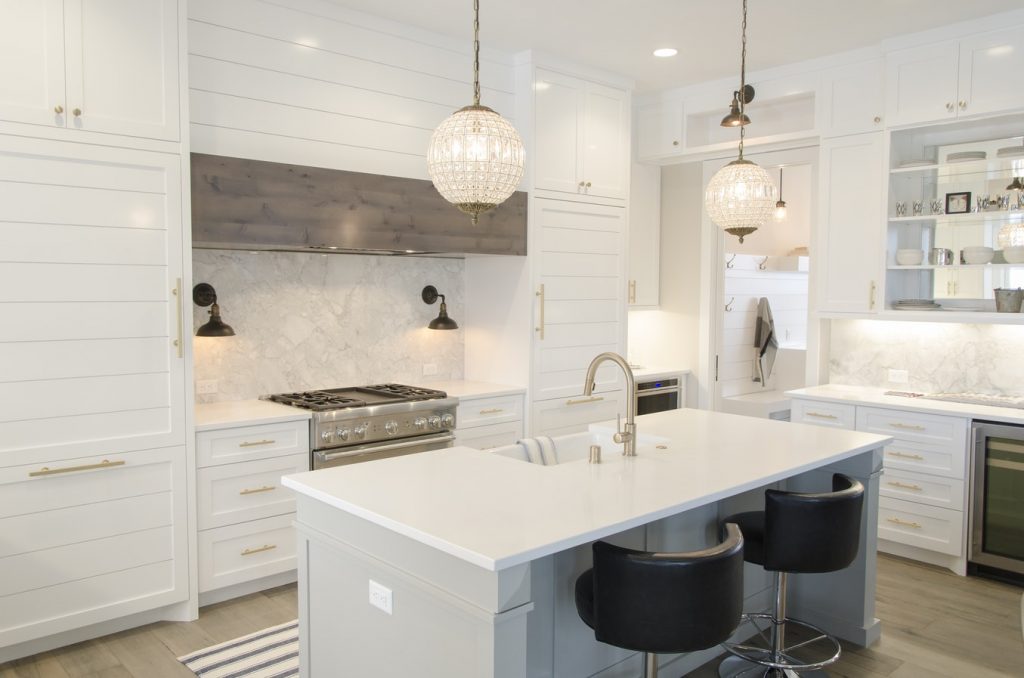
Plus, with the addition of an island, you’re tapping into some of the “transitional” or multi-purpose uses of the space.
5 - Breakfast Nooks
The kitchen is, increasingly, the heart of the home, and the popularity of breakfast nooks and kitchen seating is one of the best illustrations of this concept.
Think of it this way: you’re trying to get the kids out of the door, but still want to spend a few moments with them in the morning. If you don’t have an open-concept main floor, it can feel lonely sending the little ones into the dining room to enjoy their breakfast while you get their lunches packed.
That’s where breakfast nooks come in.
Whether it’s a small table nestled in a corner or bar seating at an island, a breakfast nook is a great way to entertain guests and family while you’re busy in the kitchen. It adds a little extra something, perfect for modern, multi-use kitchens.
Let’s be honest, the kitchen plays double-duty all the time. How many people mosey over to the kitchen during a house party, abandoning the living room in favour of the kitchen’s energy? How many couples catch up at the end of the day as they do the dishes or make a meal together? Creating additional spaces for socializing within the kitchen is just the natural next step.
6 - The Right Stuff
Materials go a long way, but it takes some consideration and thought to find materials that go well with one another. Your materials tie your kitchen design together.
We generally recommend starting with countertops to make the most of the space, as it’s a central feature that catches the eye and sets the tone. From there, backsplash, tilework, flooring, and cabinetry are all pieces that need to strike a balance between form and function. Still, it’s your space! It should reflect you and your tastes.
When choosing materials, though, there are a few core concepts to keep in mind:
- Countertops are usually the single biggest source of colour and texture in a kitchen. As such, they tend to dictate the tone for the rest of the space. Generally, you’ll want to stick to a single material, but you could also potentially include some variation for the pantry or for an island.
- Cabinetry will often dictate the main material for the space. It’s at eye level, so it’s typically one of the first things that pop out to visitors. Simple, natural materials are your best bet, and light-coloured cabinets can help keep a room feeling bright and open. Other materials and tones can add depth.
- Finally, the finishing touches pull a space together. Dark countertops pair wonderfully with a lighter tone for the backsplash, for example. Visually “busy” things, such as complex tilework, should always be countered with neutral elements to avoid overwhelming the eye.
So Much More Than a Kitchen
As we’ve touched on numerous times throughout this blog, kitchen design is so much more than creating a comfortable, practical space to prepare food.
The kitchen is at the heart of the home, a place where families recharge, come together, and share with each other. It’s increasingly a social space, but one with an intimacy that simply makes a house a home. And really, that’s what it’s all about: you’re not designing a kitchen, but creating a home you can enjoy for years to come.
Trust in Expert Custom Home Builders:
Work With Contractors
Working with Experienced Professionals Gets the Best Results for Your Custom Home
You’ve probably heard a few horror stories about unreliable general contractors. Unfortunately, there are plenty of good people who’ve had bad experiences working with so-called “experts.” The good news is that most custom home builders aren’t cut from this cloth and share a passion for helping their clients bring their vision to life.
Ask anyone on the Sunter Homes team, and you’ll quickly learn that the contractor community is incredibly supportive and strives to go above and beyond for their clients. We all share a passion for this work, after all, and we love helping our clients make their home their own.
If you’re still cautious about contractors, consider the alternative: the DIY route. Even if you’re pretty handy on your own, and have completed a few renovations in the past, you’re probably not ready to try to build your own house.
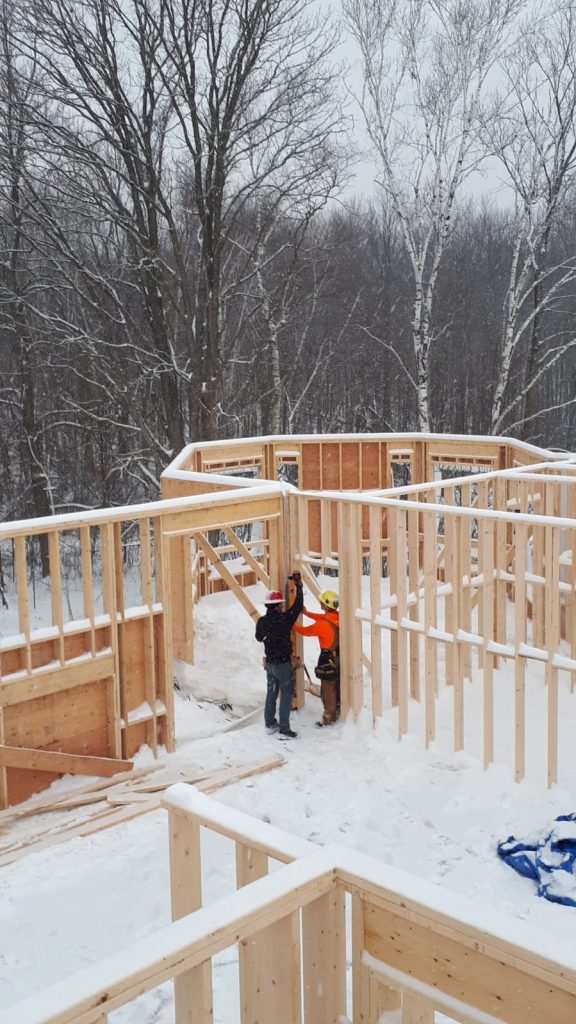
Do You Need to Work with Contractors?
As tempting as it is to handle construction on your own, yes, you should absolutely work with contractors to build your own house.
There are plenty of reasons why you should hire experienced custom home builders for this, but really, they all boil down to the fact that these people do this professionally. At the end of the day, unless you’re a contractor yourself, it’s a lot to handle, even if you’ve got renovating and woodworking experience.
For example, even if you’re comfortable working with bathroom plumbing or laying tiles, there’s a lot more work that needs to go into a home. Insulation, foundations, wiring for lighting, and space for furnaces and plumbing… at some point, you’re going to need a helping hand.
If you’re simply looking for a more hands-on experience and want to get involved, most contractors should be able to accommodate that. But consider how large-scale a home is. Let the pros handle it!
Working With Pros for Renovations
This is where the DIY approach becomes a bit more viable.
Of course, you may still need to hire contractors for certain jobs, such as electrical wiring or HVAC installation. In these cases, it’s worth it.
Finding Contractors That “Get It”
So you’re ready to work with contractors, but don’t quite know where to start.
You’re going to have to do a bit of research. This includes browsing the Internet, looking for contractors whose work you admire (check out their portfolios online), and reaching out via email or phone to get a conversation started.
Of course, one of the best ways to find contractors who are genuinely great to work with is to ask around. If you know friends or family nearby who’ve had a good experience, ask if they’d make an introduction or recommendation. If this isn’t an option, turn to online reviews! These are fantastic ways to check out a contractor’s reputation. You’re getting genuine, honest opinions from people who’ve worked with them.
Look for examples of work you really enjoy and check out what contractors have to say about their work. Explore the team pages on their website to get a sense of their skills and passions, and find the people who “get” your vision. This will mean reaching out and getting in touch, though, which brings us to the next step.
Once you’ve found a few contractors you think would be a good fit, get in touch, and get your questions ready. This is, quite literally, their job interview, so it’s the best time to get as much information as you can.
Questions to Ask Potential Contractors
What are your qualifications?
This is the big one. You don’t need to be this up front, of course; ask them how long they’ve been in business, how they got started, how their company operates, and about past work. Their qualifications should also include memberships in professional organizations, licenses for their staff, and a few details about insurance and liability. Memberships in regulated professional associations and organizations is a good sign that your contractor is reputable and reliable.
What services do you offer?
When you’re interviewing potential contractors, ask them about their services. You may be surprised at some of the work they include as part of their services; for example, at Sunter Homes, we work with award-winning designers but are equally comfortable if you bring your own design.

We also have plenty of experience with custom carpentry. Other contractors have other strengths and areas of focus, even if you’re “just” looking for someone to build your home. This can also help identify red flags—for example, they do basements and living rooms but have never done a kitchen.
Could I talk to some of your past clients?
Closely related to browsing their portfolio, asking about past clients should be a positive experience. You’re looking for more information about happy clients, and most contractors will jump at the opportunity to show you more of their work and have happy clients speak highly about them. You could even ask to visit a current project to get a sense of their work process and abilities. You’re basically checking their references at this point and doing your due diligence before you entrust your home with a stranger.
What is your ballpark estimate for this project?
Your contractors should be comfortable enough to offer a rough estimate of costs with a project based on initial meetings. Keep in mind this is only a rough estimate; if you want something more concrete, it’s best to get it in writing as part of the quoting process, which may have a fee attached.
Will we get a written contract?
A written contract will set out the agreement between you and your contractors. It will include the agreed-upon prices and costs discussed with your contractor during their quoting process. If a contractor answers NO to this question, walk away. Without a contract, you have no proof you and your contractor agreed to anything, and you should not let anyone proceed with work on your home.
Do you offer a warranty?
Reputable and reliable contractors provide warranties. For example, Sunter Homes offers a two-year warranty on all our work. We offer a complimentary inspection and follow-up 30 days after we’ve finished work on your space, and another at the 1-year anniversary of completion. Renovators and home builders should stand behind their work, and if they’re not willing to deliver on the quality you expect, you should look elsewhere.
Of course, once you’ve got the information you need, the biggest question is, “When can you get started?”

Developing a Good Working Relationship
The key to a truly beneficial relationship with your contractor is communication.
This doesn’t mean you should hover over them at the job site, call them non-stop to second-guess their work, or otherwise pick apart decisions and details. You’re not paying to be a jerk, after all.
It does mean that you should establish boundaries and protocols for any potential issues that may arise. For example, before calling your contractor at 10 o’clock at night when they’re off the clock and spending time with their family, establish some agreed-upon times that you can reach out with questions or comments.
This goes both ways: you might not want to be interrupted during your day at work unless it’s a major emergency. You’ll also likely want some contingencies or secondary contacts who can answer questions on your behalf (your partner or spouse, most likely) and someone you can reach out to if your lead contractor is busy.
At Sunter Homes, we definitely get how important it is for our clients to visit the job site and see progress. We also work hard to stay accountable to our clients and try and schedule regular meetings to keep you apprised of your home’s development. In fact, in our experience, you’ll likely be calling us less often than we call you! Your satisfaction is always our primary concern.
Bringing Your Vision For Your Home to Life
Finding a reliable contractor or custom home builder isn’t as challenging as the scary stories might have you believe. Most contractors will work to support your vision and help you bring it to life, but it’s important to remember that the process is a two-way street.
Developing an effective working relationship starts with asking questions and setting expectations. With a bit of planning, research, and careful consideration, you can find a stellar contractor to build your house to your exact specifications. Plus, you’ll find one who’ll make the process as smooth and stress-free as possible, ensuring your every need is met and that you’re left with an amazing home that’ll stand the test of time.
Home Office Renovations for Remote Professionals
Creating a Space That Meets Your Needs and Helps Improve Your Productivity
More and more people are turning to remote work as an alternative to the usual 9 to 5 grind. Better internet access, flexible schedules, and tax incentives make remote work possible, and in many cases preferable, when compared to the standard office setup.
As a result, the home office is more popular than ever, with remote professionals determined to create a space that helps maximize their productivity.
Of course, this has created more than a few bad habits, make-do solutions, and uncomfortable workspaces.
A home office should be comfortable and encourage your productivity and creativity. What better way to create a space tailor-made for your needs than with a fully renovated home office?
Why is a Home Office So Important?
Imagine this:
You’ve gotten yourself all set up for remote work at home. Your laptop is ready to go, you’ve got a hot cup of coffee waiting, and you sit down on your couch to get some work done.
Hold up!
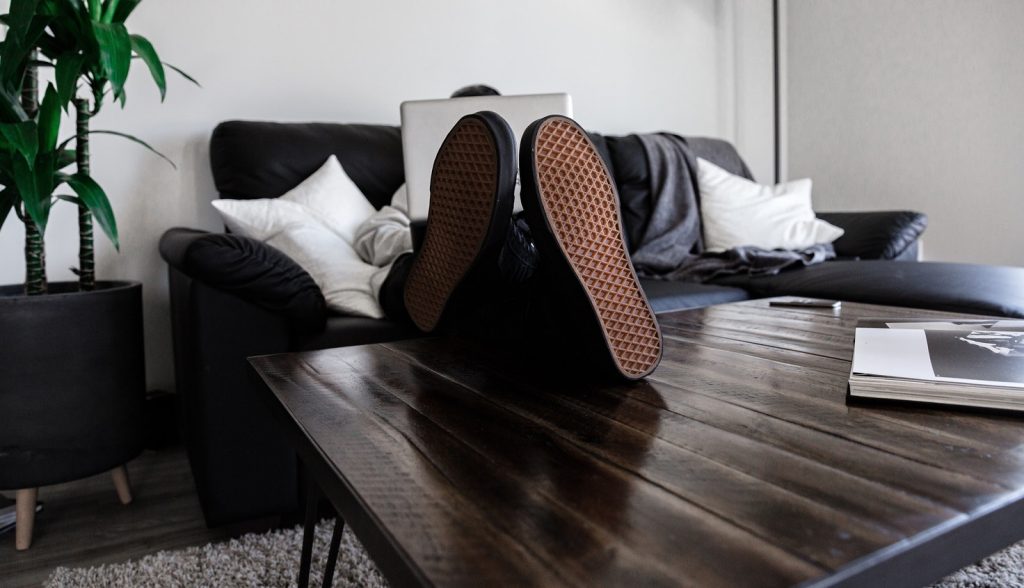
The comfiest couch is eventually going to make you want to lie down or stand up to give your back a break. Sitting in front of the TV is a recipe for distraction. Besides discomfort, eventually, the line between work and leisure will blur so much that you won’t get anything done.
There’s something to be said about treating work—even work at home—like a trip to the office.
Beyond the obvious and immediate benefits, renovating your home office to maximize productivity can do wonders for your mental health, helping you handle the stresses of the day and stay organized from start to finish.
Investing in home office renovations can help you create a space that works for you. Working with the expert, award-winning team at Sunter Homes can help you plan your dream space and make it a reality.
Planning Your Home Office
We’re so often conditioned to think an office needs to be a desk and four walls, but you’re actually able to get extremely creative with this space! Start with a simple evaluation of your prospective office space. What are you working with? Can you add square footage by taking down a wall? What design features should it include?
There are a few key considerations that will help define your home office:
- Comfortable Workstations
- Good Lighting
- Smart Layout
Workstations should offer you a place to focus, free of distractions and clutter. At the same time, you need access to those items that help you get your work done, which means a variety of easy-access storage options.
Floating desks offer a visually stunning workstation solution, but you can also create a nook set below a window that will fit a desk perfectly. Alternatively, if you like to move around while you work, or need a larger space, you can set up a drafting table in the centre of the room.
This would provide more space for smaller, stationary work surfaces elsewhere in your office. Remember, the layout needs to be conducive to your workflow! Think about your work needs and determine the best setup for your situation.
Creating Productive Spaces Tailored to Your Needs
Let’s get this out of the way right off the bat: the layout you’ve envisioned might not work with the space as-is. That’s why you’re renovating!
That spare room in your home might have a good basic setup, but a few careful renovations can improve the location of electric outlets, phone lines, and more. You can add much-needed natural sources of lighting, creating a window or skylight to give you a view when your eyes need to take a break.
Custom shelving and cabinetry let you tailor your space to your needs. For example, hiding your printer in a unique cabinet could allow you to pull it out when needed, and stow it away to save desktop space. Working with experienced contractors and carpenters is a great opportunity to create these one-of-a-kind storage solutions.
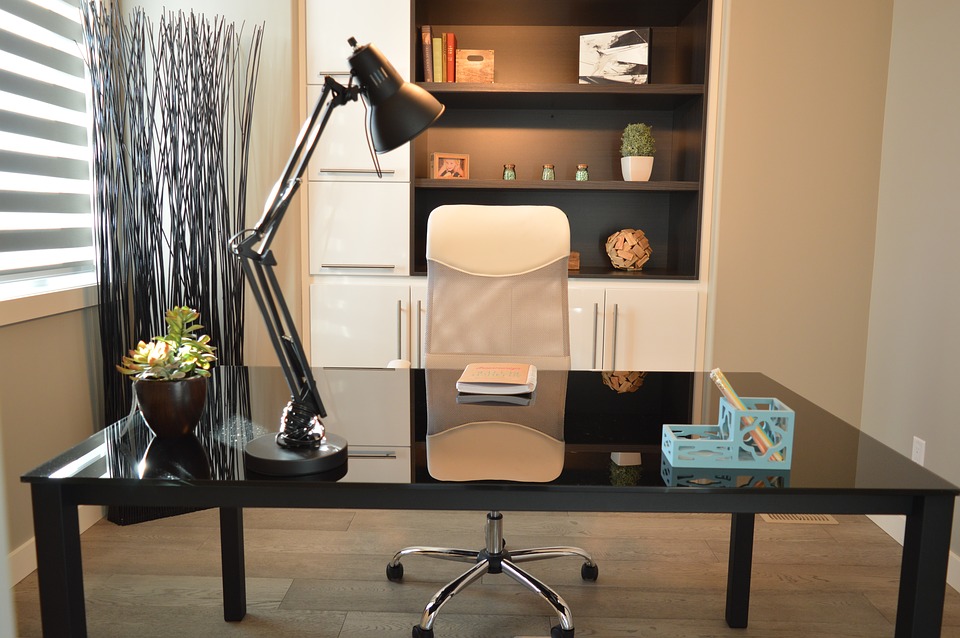
Renovating your home office also gives you the opportunity to soundproof the space, giving you a bit more privacy from the rest of your home. As we mentioned earlier, creating a work-first mindset can help you focus and prevent your home life from affecting your work ethic and vice-versa.
Tips for Organizing Your Home Office
Setting up your home office means maintaining some space for circulation around furniture, giving you access to move freely as needed. It can take a bit of thought but determining how you’re likely to move around your space will help you find a layout that’s both comfortable and functional.
If you’re setting up multiple screens in your office, such as a TV in addition to your main work monitor, you might want to consider your eyeline at your desk. Setting up a TV that you can easily watch from your desk is a recipe for distraction, after all!
Remember, beyond functionality, your home office needs to be a relaxing, comfortable environment. If you ever have business prospects or colleagues over for a meeting, you should consider additional seating and a few simple décor items.
Never, ever underestimate the importance of good lighting. Even with a skylight, you should still have plenty of lighting options available to help save you from eye strain. Whether you opt for free-standing lamps or recessed pot lights, make sure you can see what you’re doing at your desk at all times.
Your Home Office is Your Base of Operations
No matter what approach you take for designing your home office, it can’t be overstated that the space in which you work can have an effect in the quality of your work. When there’s a home for everything, and you can reduce clutter and wasted space, you’ll quickly find that this peace is reflected in your day-to-day work.
When you don’t have to think twice about where something goes, you can better focus on the tasks at hand. Designing the home office of your dreams can help you get the job done without pulling your hair out.
Surviving Kitchen Renovations
Tips to Help You Live Through Kitchen Renovations
As exciting as they can be, kitchen renovations present a few challenges that often get swept under the rug. No, we’re not talking about issues you might find once you open up a wall or the challenge of altering a kitchen design you’re not totally happy with.
We’re talking about something much more basic: the fact that you won’t have a full kitchen until your renovations are finished.
When work begins, you’re likely to wander into your kitchen half-asleep, looking for your morning cup of coffee only to realize your kitchen isn’t really a kitchen anymore.
ht
Beyond the kitchen design process and physical impacts of construction, renovating a kitchen means you’re going to have to take some time to plan out a temporary solution to keep your family fed.
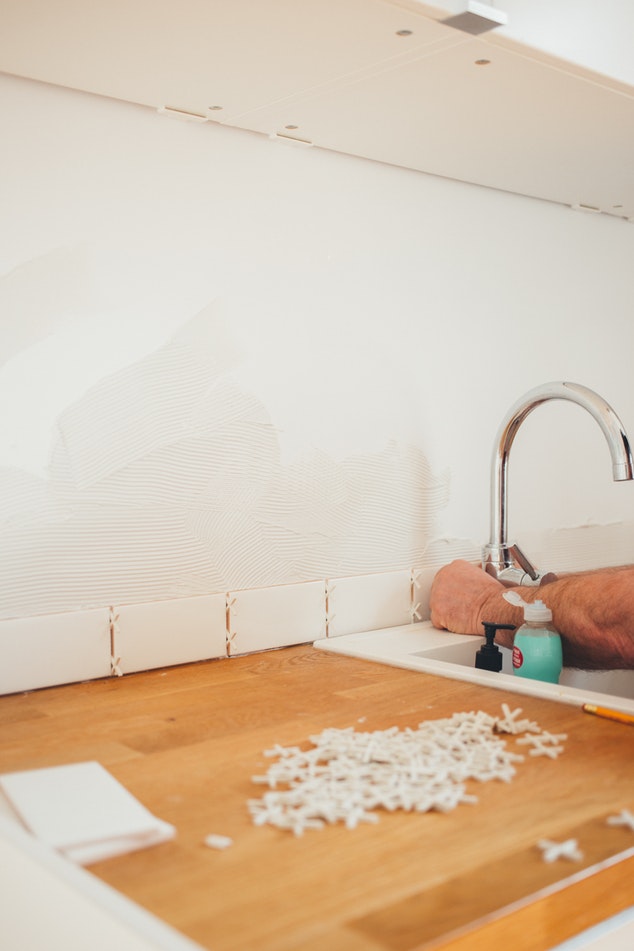
How Long Do Kitchen Renovations Take?
If you don’t count the planning and design phase, kitchen renovations typically last anywhere from four to eight weeks.
Of course, this varies based on the scope of the project. It’s not unheard of for larger projects to take up to three months or more. That ignores any setbacks you might encounter along the way, too.
From start to finish, if you include the design process and the time it takes to source and purchase materials, your entire project could be a 12-week process.
With up to half of that time covering actual renovation and construction work, that means you could be without a fully functional kitchen for six weeks or more.
What’s more, at the end of the day, kitchen renovation costs depend on your budget, materials, and contractors.
Your kitchen design contractors will give you estimates for the project. A good rule of thumb is to add 20 percent to the estimated cost to account for unexpected costs that could arise during the renovation.
It’s better to have that cushion in your budget than risk going too far over budget.
How Renovations Affect Your Day-to-Day Life
Renovations are noisy and messy. Your contractors will do their very best to minimize the impact on your life and keep things as tidy as possible, but the fact of the matter is that it’s a messy job. Once work begins, your kitchen will be out of commission until the job is complete. As such, you’ll have to find another place to prepare meals.
This might not seem like a big issue at first but consider just how much use your kitchen gets during a single day. It’s the heart of the home, and you likely spend far more time there than you might be aware of.
Temporary kitchens or food-prep areas are vital if you plan on staying in your home during the renovation process! Otherwise, you might be eating out a fair amount, which adds up quickly.
Setting Up A Temporary Kitchen
A temporary kitchen elsewhere in your home can save you from the added costs of eating out night after night. While it’s tempting, the actual cost of eating out so often might put a serious dent in your savings if you’re doing it every day for the full six weeks of construction.
If you can set up a temporary kitchen in your home, it’s going to offer a lot more flexibility. If your dining room includes a convenient sideboard, it’s a perfect place to set up. You can include a few handy appliances, store food items, and set up a small dishwashing station.
Make sure to include a trusty trashcan with a lid, a dishwashing tub, soap, brushes, and a few dish towels. If you can, get a small drying rack, too. Alternatively, invest in some compostable dinnerware that you can use a few times before chucking. It’ll cut down on your dishes without creating more pollution.
There are plenty of handy appliances to include, too:
- Coffeemaker
- Electric kettle
- Microwave
- Mini fridge
- Toaster or toaster oven
- Portable electric grill
- Electric frying pan
- Slow cooker
Don’t overlook the flexibility offered by a barbecue! Keep your propane tanks topped up and fire up the grill to cook a quick meal outdoors. This is even an option during milder winter weather if you’re pressed to cook a meal up.

Easy Meals
Avoid cooking messy meals that require plenty of cleanup. You probably don’t want to wash off thick pancake batter or grease from dishes in your beautiful bathroom sink.
Meals that are ideal for a makeshift kitchen include:
- Foods you can toast indoors
- Grill-friendly foods
- Foods you can microwave
- Soup
- Sandwiches
- Cereal
Leave out vital meal prep items, like cutting boards, cutlery, dishes, pots, and pans. You don’t need a full set of kitchenware, but the basics will keep you going until you get your kitchen back.
Tips for Minimizing Renovation Impact
Prepare for Noise and Dust
Renovations are noisy and messy. If you leave for work every day, you won’t have to endure this disruption as much. But if you work from home, or you’re retired, plan to spend more time out of the house.
To protect your floors and furniture from construction mess, contractors will usually lay down drop cloths and carpets along the path they’ll be using in your home. Keep a few drop cloths of your own on hand just in case. Also, keep your pets out of the way of contractors.
Prep Meals Ahead of Time
If you’ll have access to a freezer during your renovations, cook meals and freeze these in microwave-safe containers before the renovations start. This will make eating lunch and dinner a whole lot easier.
Alternatively, if you have a slow cooker, set it up early in the day in your temporary kitchen and get a delicious meal when you come home. The only downside is that the smell of cooking food might mean a few hungry contractors will want to join you for dinner!

Get Your Grill On
Even in the middle of winter, you can use an outdoor grill to cook dinner. You can also use your pots and pans on the grill. Just rub a bar of soap on the bottom and sides to wash off any soot.
Look up grilling recipes online to discover new tasty meals while your kitchen is under construction.
Set Up a Dining Table
If you normally eat meals in your kitchen, you’ll want to use a table elsewhere to dine on. This could be a patio table in your backyard, a drop-leaf table, or a card table.
As tempting as it might be to eat at your coffee table, you’ll regret this decision if you spill food on your couch or carpet.
Designate One Room as a Construction Free-Zone
Choose a comfortable room in your house that is off limits to anything renovation-related. Ideally, this room will not be next to your kitchen. But if it is, make sure everyone involved in the renovation project knows this room can’t be used for walking through or storing construction supplies.
If you have a room you can escape to and unwind in during the renovations, you’ll be able to reduce your stress and make it through the renovations with your sanity intact.
While kitchen renovations can disrupt your daily routine for a while, you can get through this time with careful planning beforehand. And this temporary disruption will be worth it when you can start using your new dream kitchen.
Why Custom Homes are Worth the Investment
Custom Home Builders Create Unique Luxury Homes Built to Your Specifications and Style
Every homeowner has likely given a fair amount of thought to updating their home, adding in luxurious features and beautiful fittings and finishes that stand the test of time.
But while renovations can go a long way towards creating your dream home, it’s tough to beat the opportunity offered by custom home construction.
Built to your exact specifications and incorporating your unique style throughout, custom homes offer unmatched luxury, value, and comfort.
Custom home builders work with you to make your dream home a reality, whether you’re building on an empty lot or rebuilding on the foundations of existing property. These homes are a chance to get exactly what you want in a home that’s built to last, built around you and not as a one-size-fits-all option.
That said, a custom home is a significant investment, but there are plenty of reasons why that investment is worth it.
Luxury Homes that Reflect Your Lifestyle
Imagine living in a home that you helped design.
Designing your own home means saying goodbye to frustration about storage, shelving, door height, room size, and so much more.
It’s an opportunity to build a home around your needs and how you live your life.
You can customize your home to adapt to your preferences and changing family needs.
Add rooms and space you’ll need now or in the future, so you can use your home efficiently.
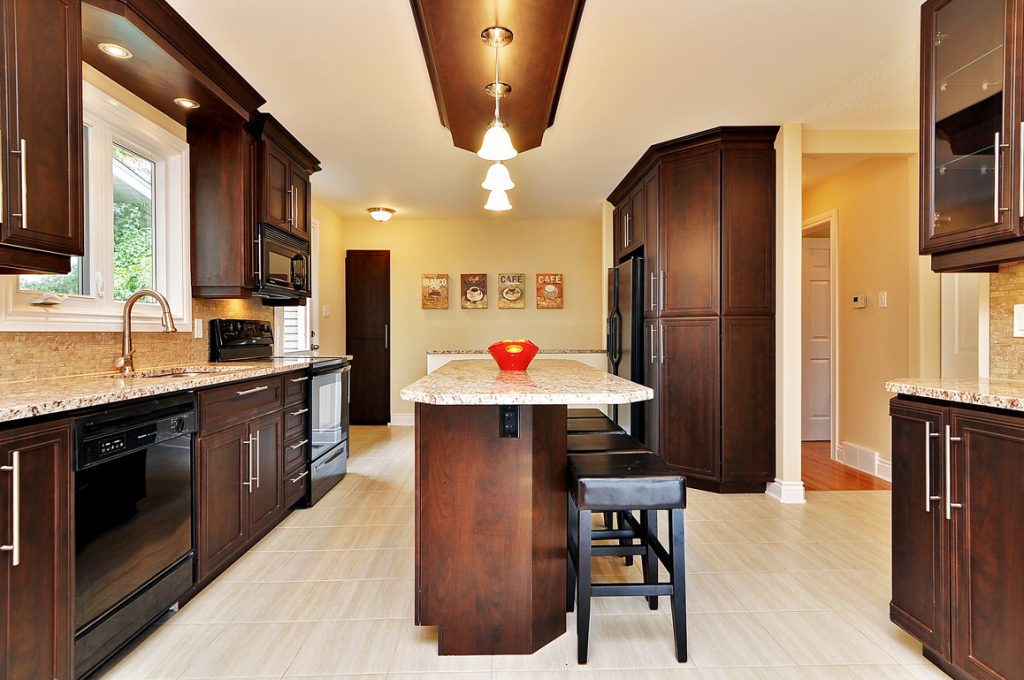
On average, new custom homes feature an additional 700 square feet of liveable space compared to homes built just 20 years ago. This means that you can enjoy the bigger kitchen you’ve been dreaming of, larger windows, a walk-in closet, and so much more.
Because these homes are designed from the ground-up to your specifications, the possibilities are endless. Working closely with custom home builders lets you create a unique design that accounts for all your needs and wants (within your budget, of course).
Or, if you’ve already designed your dream home with an architect, custom home builders will gladly work with these plans.
Location, Location, Location
This saying rings true with custom home construction.
Location is everything but buying a new home that offers a few upgrades over your existing location likely means changing neighbourhoods.
Adding space often means heading to younger neighbourhoods further from the heart of a town or city.
But custom home construction can occur wherever you choose, whether in your current home’s location or on a vacant lot in the countryside, suburbs, or in the heart of the city.
Aside from the feeling of accomplishment for being part of the entire design and construction process, you can truly enjoy your home as your own, with all the convenient and attractive design features you’ve been dreaming of.
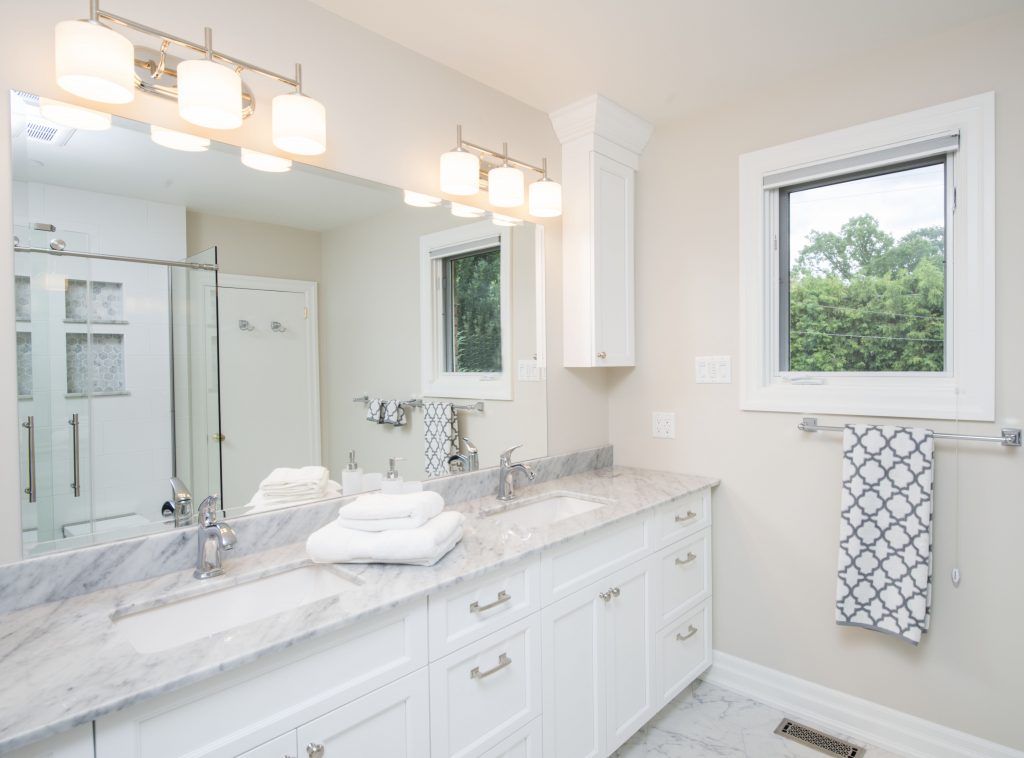
Start-to-Finish Oversight
From the initial design to the finished product, customers are involved each step of the way for their custom home design and construction.
This client involvement means your vision guides the entire design and construction process. Furthermore, you can continue to make more choices along the way.
Say you saved money on lumber and plumbing. You can ask to put that money towards an extra closet in your bedroom and a granite counter top in your kitchen.
If you manage to save money throughout the project, you might be able to put that money towards further upgrades in your home without going over budget.
Or you can put that money toward another custom luxury feature. It’s up to you.
Whatever the savings, you can fine-tune your house to become the luxurious home of your dreams.
Full Home History and Lasting Value
Since you know the full story behind your custom home, you don’t have to worry about what might hinder renovations, updates, or upgrades in the future. You’ll know exactly what your home can and can’t handle, and you won’t be afraid to open up a wall since you already know your home’s bones.
Often during home renovations, homeowners come across obstacles and setbacks because they don’t know what’s behind the walls before tearing them down.
Old plumbing and wiring are common problems that need fixing, as are toxic building materials found in older homes. For example, nothing slows down a renovation quite like opening a wall and discovering asbestos. In this case, a special abatement team must come in to safely remove the asbestos. Not only does this take time, but it also increases your costs.
Plus, if you ever decide to sell (though let’s be honest, you won’t want to give up your unique home), this comprehensive record of your home’s history is a fantastic resource for real estate agents to work with.
Because your home won’t need any work done, it’s in excellent shape for resale, and
Experienced Custom Home Builders Bring Value
As a customer with the vision for your dream home, you benefit from working with an experienced construction company that specializes in custom and luxury homes.
Custom home builders take pride in their work and provide high-quality control over each step of the project.
Clients always come first for custom builders since it’s the client’s dream and vision that is driving the design.
They keep you informed and work within your budget.
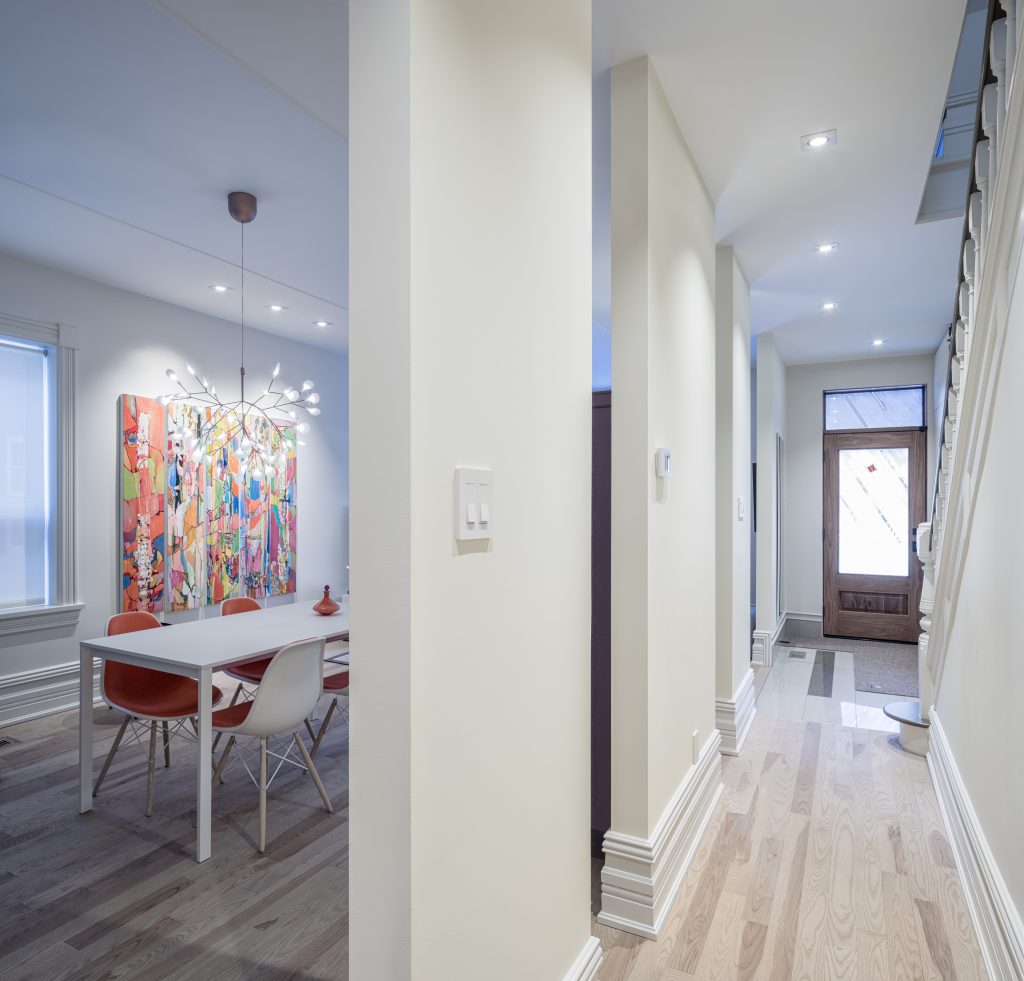
Features and Materials that Add Value
While it’s unlikely you’ll ever want to sell a custom-built home, there are several features you should consider including in your design that nonetheless add value on the market.
Many of these features are energy saving or energy efficient, helping reduce heating and cooling bills or eliminating drafts and ensuring optimal seals and insulation throughout.
What’s more, the custom, high-end nature of the home carries appeal, too.
For example, at Sunter Homes, we use high-quality materials that are accurately installed to minimize future maintenance needs. This means less work in the future and a home that doesn’t just look fantastic but stands the test of time, too.
You can also add innovative technology to make life that much easier. Home automation systems control everything hooked up in your home, such as lights, heating, cooling, security, and sound systems.
While it’s true that these unique home builds represent a significant financial investment, it’s an investment well worth it in the long run. Custom homes retain their value and are built to last you a lifetime. If you’re looking for an opportunity to create a truly unique home that reflects who you are, then working with the custom home builders at Sunter Homes is the perfect place to start.
Home Renovation Planning from Start to Finish
Expert Advice For Keeping Home Renovation Projects On-Track and Stress-Free
Home renovations are a big undertaking, whether it’s a smaller project or a larger makeover. With so many factors to consider, it’s important to plan things out ahead of time.
Managing expectations is integral to any good plan. It’s easy to get overwhelmed, especially when the unexpected rears its head. In our experience, one of the chief reasons why people hire renovation contractors is to remove stress.
The Sunter Homes team is always here to help you with every aspect of your renovation. From planning to construction, we’ve got plenty of experience bringing beautiful spaces to life.
As such, we’ve put together a few pieces of must-have advice and information to help you get a handle on any project.
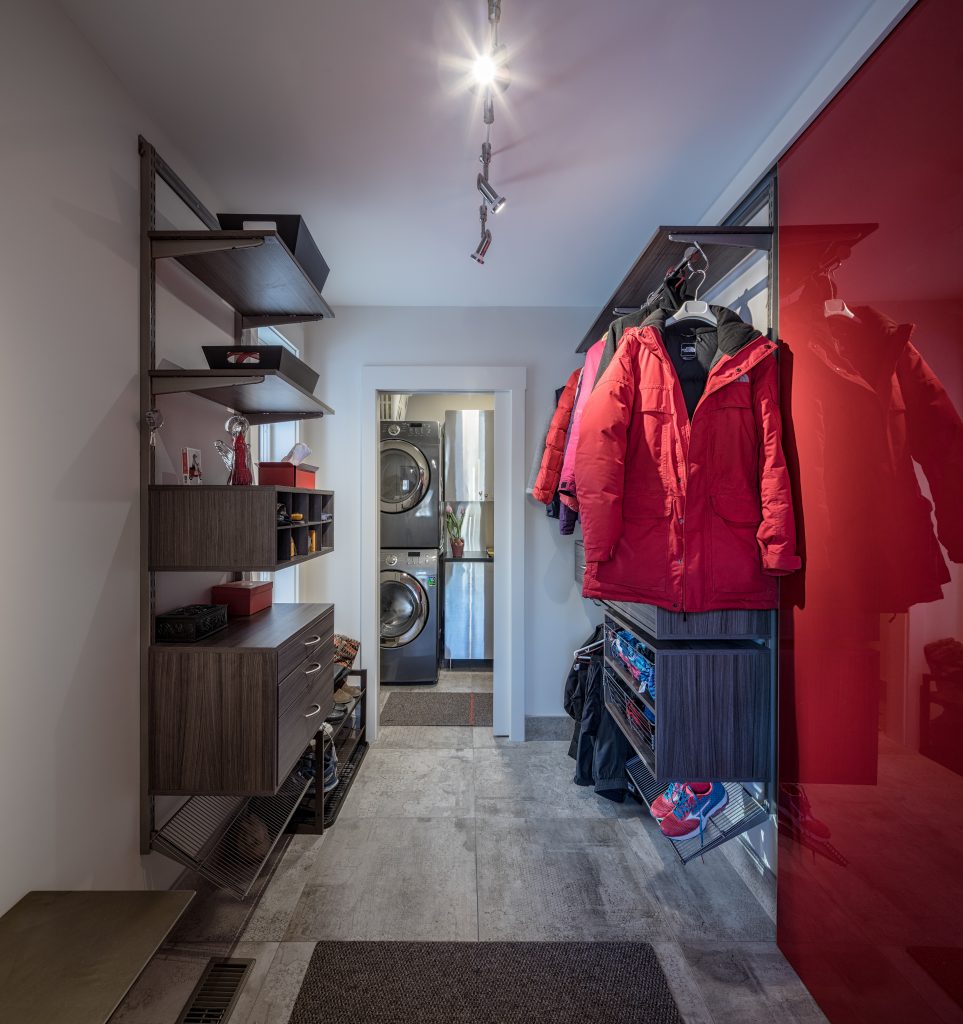
What’s Your Vision?
Before any project can break ground, you’ve got to take a moment to establish what the project actually is. You’ve got some ideas, but are they concrete enough to invest your time and money in?
Start by conducting an inventory of the rooms in your home. From there, dream big! Create a list of features and rooms your dream home has. What do you want from your home? Compare both lists to see what gaps can be filled to meet your needs.
For example, say you want an extra living room in your home. Where is the best existing space for this? Is it on the main floor, in the basement, or can it be created in a loft?
Remember, at this point, you’re not imposing limits. Don’t think about the budget, don’t think about structure, and don’t think about what’s pragmatic. Focus on what you want and build a plan from there!
Expert Input
By this point, you’ve got a good sense of what you want out of your home.
Now is the perfect time to build out a plan with help from the experts!
Professional home renovators offer expert advice to help you bring your vision into the real world. For example, here at Sunter Homes, we work with talented architects and designers to help translate your vision into an on-paper plan of action.
From there, we offer our advice on materials, timeline, and construction details. Your renovation contractor will advise you on what’s feasible, what’s within budget, and what can be done on a given timeline.
Design and Planning Considerations
Now you’re getting into the details!
By the time you’re consulting with renovation experts, you should be finalizing design and planning details. Here are a few things to keep in mind before you give your renovators the go-ahead to start:
Storage
Storage space needs to straddle a fine line between convenience and practicality. It’s certainly tempting to tear down existing storage options and start fresh, but take the time to look at how you’re actually using that space.
If parts of it can be reused or updated, then there’s no sense scrapping things. You might be able to make a few simple updates to improve storage options!
Try rearranging drawers, shelves, closets, and other storage areas to free up storage space.
Maximizing Existing Space
Do you really need a home extension or addition?
There are always ways to maximize existing space. In some cases, it means rearranging a room’s layout and focus. In others, it could mean knocking down walls to create an open-concept space.
It might even be simpler design updates to make the most of an under-used room. Whatever the case, working with expert designers, architects, and renovators can help you look at your existing space in a new light.
High-Quality Features and Materials
For beautiful renovations that last, there’s no real alternative to high-quality materials and features. This way you can admire and enjoy your home renovations for many years to come.
High-quality materials, installed properly, will last a lifetime with minimal maintenance. You want a finished space that’ll look fantastic and stand the test of time, after all.
10 Renovations & Upgrades That Increase the Value of Your Home
Are you renovating ahead of selling your home? Even if you’re not thinking of moving immediately, some renovations can actually help increase the value of your home. It’s worth keeping these projects in mind to help you get a better price, but beware! Some of these renovations can improve your home so much you’ll never want to leave.
- Flooring – Hardwood floors are a classic, timeless look, and much more adaptable than carpeting. Homebuyers love hardwood floors, but heated subflooring and good tilework are also very popular.
- Hardware & Fixtures – Good hardware and good fixtures will never go out of style. Dependable, reliable details that add a touch of class can help boost your asking price.
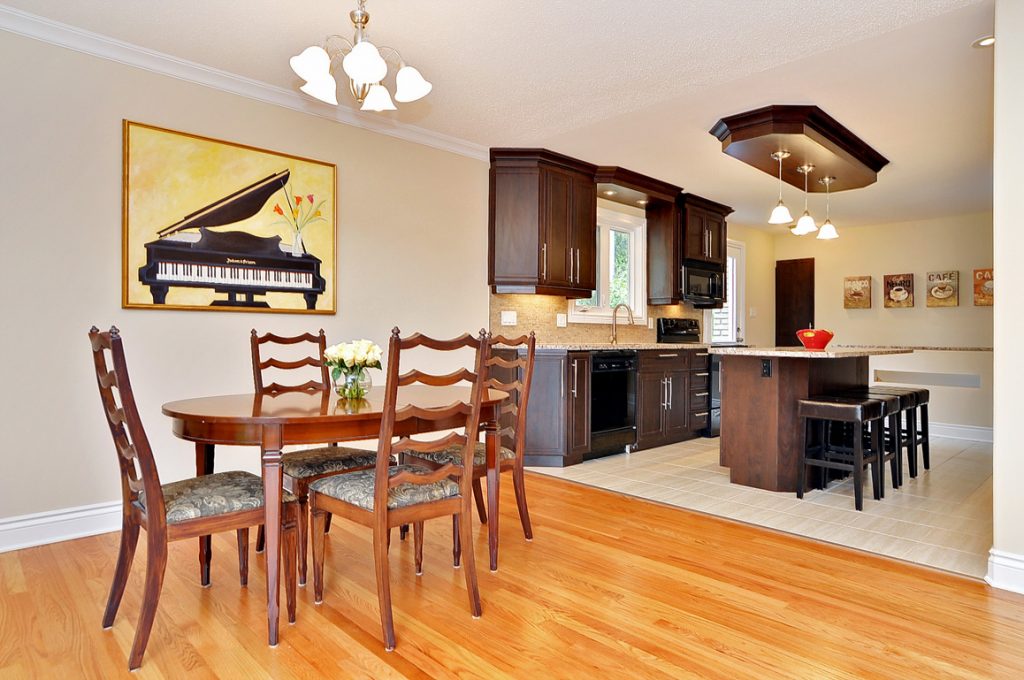
- Bathrooms – A good bathroom, partial or full, can add value to your home. The last thing buyers want to deal with after buying a home is to invest in a bathroom. If you’re looking to sell, even a few simple updates to your home’s bathroom can make a difference. Never overlook the appeal of a walk-in shower!
- Kitchen – Kitchens are the heart of a home. As such, it makes sense that families place such a high priority on a good kitchen. Good cabinets and a smart layout can help your home stand out, and fetch a higher asking price. Stainless steel appliances are a popular trend, too.
- Additional Space – Let’s face it, no one is ever going to say no to additional usable space!
- New Plumbing & HVAC Systems – Since buyers can’t see your plumbing and HVAC systems, these won’t add instant curb appeal to your home. However – they’re still selling points!
10 Things That Won't Add Value to Your Home
Of course, on the other hand, there are a few features that don’t inherently add value to your home:
- Solar Panels – Eco-friendly homes are attractive to home buyers, but you won’t recoup the costs of your solar panels.
- Wall-to-Wall Carpeting – Carpeting, no matter how new, is not usually a selling point in a home. You can almost see the disappointment on a buyer’s face when the home they’re viewing is fully carpeted.
- A Wine Cellar – While many wine lovers would be thrilled to have a wine cellar, it’s not for everyone.
- Loud Design Elements – Bold colours and tiles can scare off some buyers. If you’re planning to sell, keep these design elements as neutral as possible.
- Elaborate Landscaping – If the landscaping is too much work for a potential buyer to handle, they won’t be eager to buy. Keep landscaping attractive but low-maintenance. A good-sized backyard or front yard, if kept simple, can be a plus for families with young kids or green thumbs looking for a blank canvas.
- Swimming Pools – A swimming pool may add some value to your home, especially if most of your neighbours have pools, but you won’t recoup most of the costs when you sell.
- Bathroom Additions – While a renovated bathroom adds value to your home, you may not recoup all the costs of an additional bathroom.
- Ornate Lighting – A decorative light fixture can add character to a room. But if it isn’t energy efficient, home buyers might be turned off by it. When changing light fixtures, opt to include LED lighting for most if not all of your lights.
- Fussy Design Details – While exposed timber looks beautiful, it can be difficult to maintain, which could scare away some buyers. So when choosing design elements to increase your home’s value, keep the potential buyers in mind.
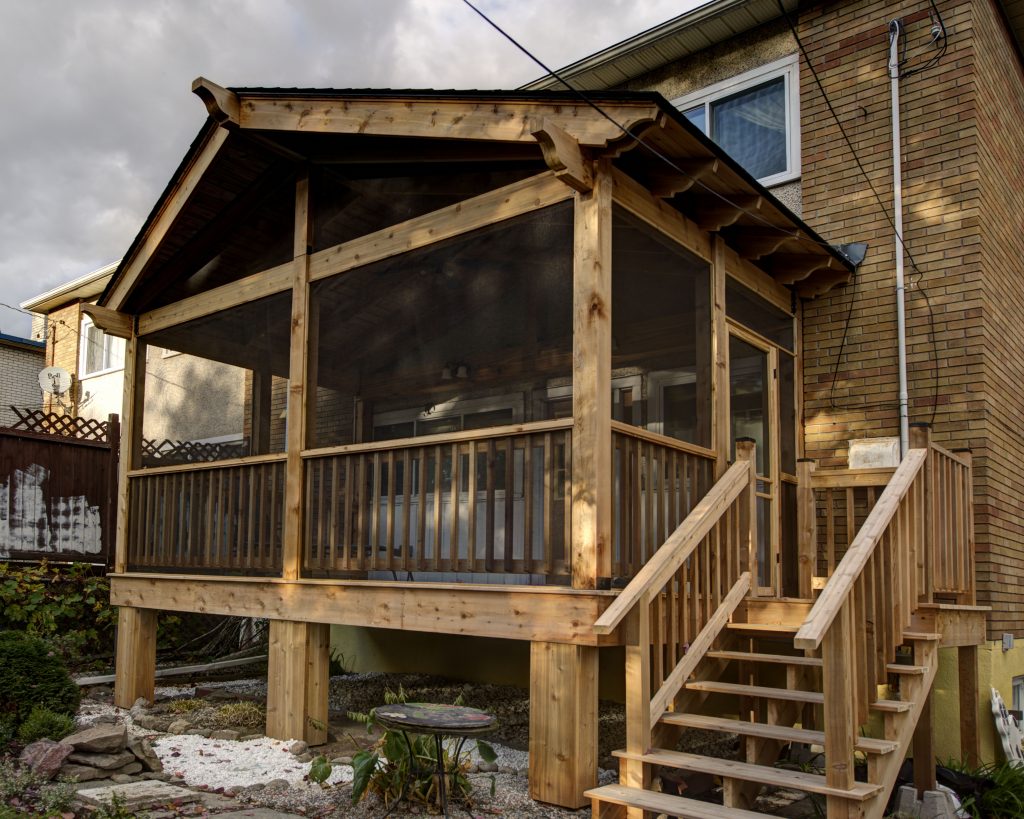
Getting Building Permits
Some home renovations may need approval from your city or municipal council. Renovations that may need approval include:
- Additions
- Structural changes
- Decks
- Changes to the use of some rooms
Before you start, make sure your renovations meet local building bylaws and have approval from your city or municipality.
If you’re not sure you need a building permit, stop by your municipality’s offices or website to find building code regulations. The City of Ottawa has a convenient one-stop page that includes details on application fees and requirements.
We’re always available to help our clients navigate the building permit process.
Setting Realistic Timelines
As much as you’d like to have your renovations over and done within a short period of time, quality home renovations cannot happen overnight. So to avoid disappointment, be patient and realistic with your timelines.
Professional renovation experts will complete renovation projects following a sequence of work. Their sequence ensures efficiency and avoids more work (e.g. cleaning up paint off new flooring) later on.
Here is an example of a sequence of work from start to finish to give you an idea of why a contractor completes work in certain steps.
- Design: Plan the design and go over it with your contractors, including the tradespeople.
- Demo: Tear up flooring and tear down walls and cabinets (according to your plans).
- Rough In: Install new wall framing, electrical, gas, and plumbing.
- Walls and Ceilings: Install plasterboard and new ceilings (if needed).
- Doors and Windows: Install trim, skirting, and architraves.
- Cabinets: Install the carcasses, leaving the doors until later.
- Countertop, Sink and Tap: Since the countertop is cut to fit the sink, these three parts are installed together.
- Paint and Backsplash: Finish painting and install the backsplash.
- Flooring: Lay floor after cabinets and painting, but before installing the appliances.
- Appliances and Lighting: The electrician and plumber will install these.
- Cabinet Doors & Drawers: Hang the doors, add open shelves, and position the drawers.
And there you have it! Keep these tips in mind before you start any renovation project. When in doubt, don’t hesitate to reach out to the professionals for help. You’ll be able to create the new home you’ve been wishing for without any undue stress!
Make the Most of An Unfinished Basement
Basement Renovation Ideas to Help You Prepare for a New Home Theatre, Rec Room, or Basement Suite
Do you have a dreary basement that you dread going down to? Are you frustrated by an unfinished basement? Basement renovations can solve these problems and put this often-overlooked space in your home to good use.
Whether you’re looking for a full renovation or simply need some finishing work done, this is a perfect opportunity to consider how your basement can augment your lifestyle or even provide an investment opportunity.
A finished basement, especially one with additional features, adds value to your home. But more importantly, it makes your home more enjoyable, providing extra living space to use for whatever you desire.
If you’re just starting to explore how you can transform your basement, or even if you’re ready to start work, we’ve put together a few reasons why basement renovations are a perfect way to complement your home and lifestyle. We’ve also got a few ideas that might inspire you to create something beautiful with our team of experts!
Why Basement Renovations are Worth It
Increase Your Living Space
If your basement has become a storage space for the odds and ends you don’t really have room for, why not renovate? If you’ve already got a finished basement, a few modifications can quickly transform the space, adding extra square footage to your living space without the cost of an addition.
Furthermore, finishing a concrete-floor basement can make it feel less like unruly storage and more like a part of your home. Even if you don’t fully furnish or outfit your basement, finishing at least provides some cohesion and comfort.
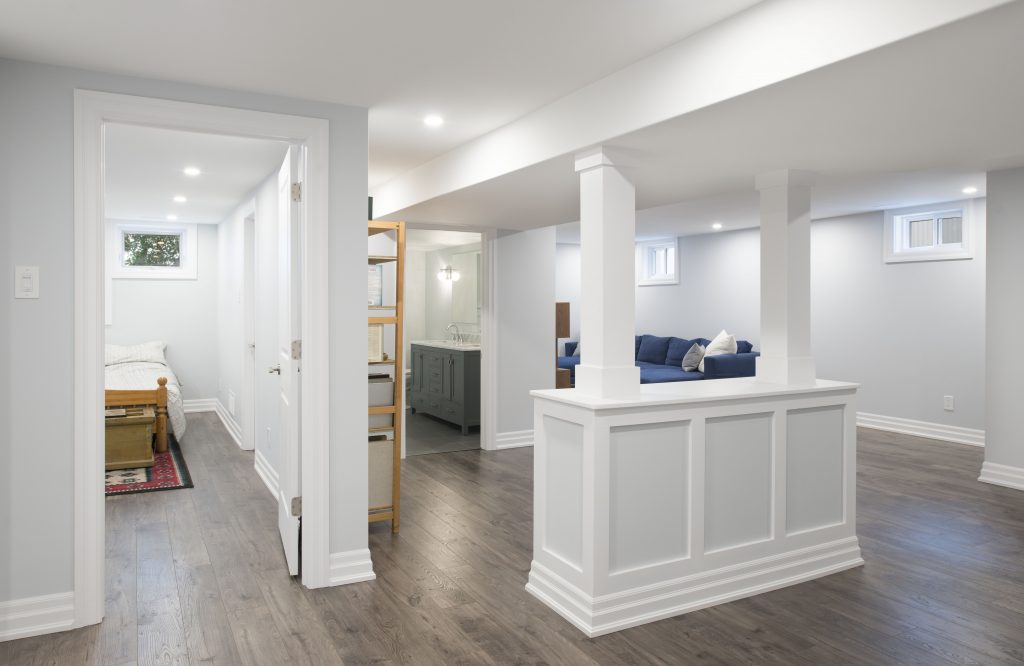
Improve Your Quality of Life
It’s hard to measure quality of life as it depends so much on things that aren’t immediately quantifiable. But look at it this way: giving yourself another space to use and enjoy is certainly going to improve how you feel at the end of the day.
Imagine doing laundry and storing belongings in a beautifully finished basement. Imagine having a full basement guest suite for guests to stay in when they visit, or a spot to put a small weight rack and a treadmill.
It’s a tremendous benefit, and it’s possible with space you may already have.
Improve Air Quality
Basement renovations are a perfect opportunity to identify and take care of any moisture problems to prevent them from reoccurring.
Moisture often leads to mould and mildew growth in unfinished basements. Mould is toxic to breathe in and can cause respiratory illnesses. Mould and water damage also make it harder to sell your home.
A clean, dry, finished basement will improve the overall air quality and condition of your home.
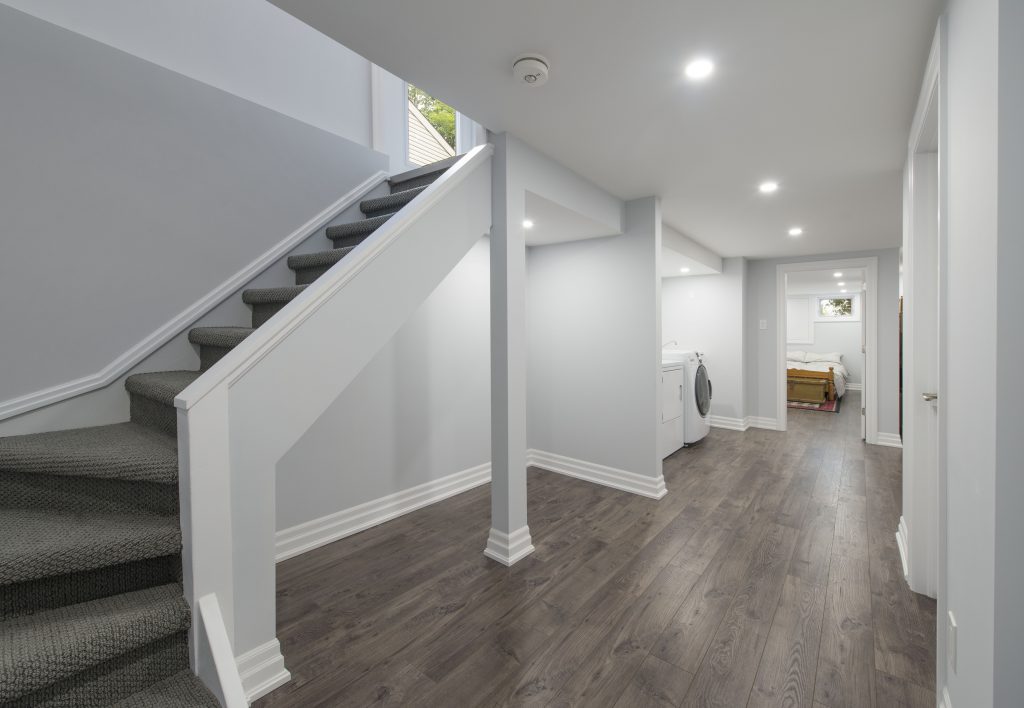
De-Clutter
One of the “hidden” benefits of these projects is that they’re a great excuse to get rid of all the things in storage that you haven’t used for years. It can also create a more organized storage space and a place to put all the stuff that’s cluttering your home, such as your kids’ toys.
If you’re tired of stepping on kids’ toys and dream of a clutter-free living room, a finished basement is a perfect place to set up a playroom and organize your kids’ stuff. This will keep the clutter out of your way once and for all.
Create a New Space for the Family
Do you want a fun, comfortable, private place that you or your teenage kids can hang out in?
If you’re like most parents, you want your kids to hang out with friends in a safe, supervised environment. And finished basements are just that, but with the bit of extra privacy teenagers want.
Turn your basement into the place your kids and their friends want to hang out in. This could include an entertainment system, home theatre, video games, darts, a pool table, and other games… more on this later.
Increase the Value of Your Home
These days, a finished basement will boost the resale value and curb appeal of your home. On average, a finished basement provides a 70% payback, making it one of the wisest home renovation projects in terms of boosting home value.
A finished basement can be included in your home’s official square footage measurements. And even if it’s not included, buyers will see the finished basement as valuable extra living space.
A finished basement will also improve the likelihood of selling your home. Many homebuyers prefer homes with finished basements, and unfinished basements are often deal-breakers.
Ideas for Your Basement Reno Project
How you renovate your basement will depend on its future uses. Some common basement design and renovation ideas include:
- A wide, open-concept space for multiple uses—rec room, family room, kids’ room, or gym;
- A kitchenette and bar area;
- Income, such as Airbnb or long-term rentals;
- Extra space for a guest suite and/or a home office; and
- A sound-proof room for a home theatre.
Create a Home Theatre
A finished basement is a perfect space for your dream home theatre. You can add comfortable reclining chairs, a surround sound system, and (of course) a massive TV or a projector and screen.
A home theatre is a great option if your family loves nights in watching favourite films together, or if you’re a film buff keen on watching your favourites without distraction. If you’re not keen on a full home theatre, consider creating a multi-purpose rec room, perfect for catching the big game with a cozy bar close on hand.
Create a Quiet Home Office
If you work from home, you likely get interrupted by both loved ones and noise from outside. Thankfully, basement finishing gives you an opportunity to create a quiet, soundproofed office to get your work done in.
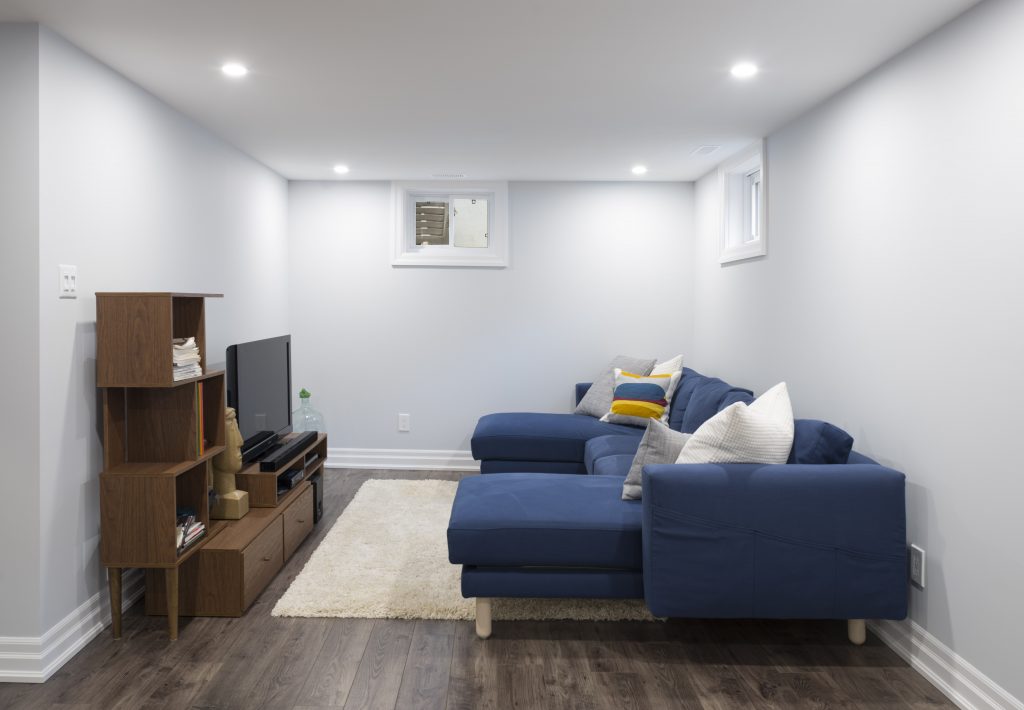
What’s more, a home office offers an opportunity to create a bit of balance and distance between your job and your home life.
You’re still under the same roof, but having a dedicated space for work can do wonders when you’re looking to maintain distraction-free productivity.
Bring Your Gym Home
Driving to the gym before or after work is often one of the last things people want to do every day. But if you have a home gym in your basement, you might find it easier to stay motivated and get your workouts in.
A home gym offers convenience and privacy while saving you plenty of valuable time and money. You won’t have to drive in traffic, pay for a gym membership, or wait to use gym equipment during peak gym hours.
What to Consider When Designing Your Space
Keeping it Dry & Comfortable
Basements are often cool, and old, unfinished basements have an unfortunate tendency towards dampness, especially during spring thaws. Basement renos are a great opportunity to address these common complaints and issues while improving on your existing space. Our team will always keep an eye out and inform you of any cracks in the foundation or signs of water damage in your basement.
Water issues may be caused by issues in the foundation, or you might just need better grading around your home to prevent water buildup and drainage issues. Installing vapour barriers in the walls and floors before framing and finishing these surfaces helps prevent moisture from getting in.
Local Building Codes
Check with your local municipality to see if you need any building permits and to help guide your basement renovation.
Building codes dictate the requirements needed for a safe building. These include the types of insulation, windows, and egress—paths to exits, especially in case of fires.
If you need plumbing and electrical work in your basement, you will also need a professional inspection.
Ceilings
The ideal height of a basement ceiling is no less than 7 feet, 6 inches, but if you’ve got the room for a higher basement ceiling, why not go for it? Consider the type of ceiling you want and how much space it will leave once finished.
Drop or suspended ceilings conceal venting, plumbing, and electrical connections while providing ease of access through removable tiles. These ceilings will reduce the amount of overhead space, and aren’t ideal for a home theatre set up. Look at what you want to do with the space before making a final decision on the ceiling.
Lighting
Since basements usually don’t have as many windows as other levels in a home, the amount of natural light is limited. This can make basements seem dark and gloomy.
But with enough artificial light, basements can feel warm and welcoming. Consider recessed lighting in the basement ceiling since it won’t take up overhead space.
Your basement renovation plans will depend on how you want to use your new basement, now and in the future. While it’s worthwhile to keep an eye on the budget, building codes, and practicality, don’t lose sight of your vision! Working with Sunter Homes, you can create the space you’ve always dreamed of and make it a reality.
Bringing Luxury to Any Bathroom
Bathroom Renovation Ideas to Transform Any Bathroom into a Luxurious Space
Bringing a touch of luxury into your bathroom renovations can be a daunting order.
Luxury, after all, instantly brings images of eye-catching fixtures and high-end fittings to mind.
If you’re a bit put off by flash pieces, you’ll probably breathe a sigh of relief that luxury bathroom renovations aren’t all about the bling. Rather than filling your space with showy pieces, bathroom luxury can be found in the simple details and pieces that create a sense of tranquil serenity.
It’s these details that can make even the smallest bathroom feel luxurious and comfortable.
No matter the size of your space, it’s the little things that count, helping pull a design together or adding features so intuitive you never have to think about them.
Large bathrooms can be made to feel comfortably intimate, and small ones can feel more spacious. Even the smallest details can improve the overall look and feel of a small bathroom.
If you’re looking for inspiration, you’ve come to the right place. We’ve put together some of the best bathroom ideas for a luxurious look and feel.
What Should You Include in A Luxury Bathroom Renovation?
This is the big question! Answering it means considering a few key factors:
- What is your budget?
- Is this your forever home?
- What look and feel do you want?
Obviously, the budget determines a lot of what is possible when working with renovation experts. Despite that, however, they’re still able to make recommendations and alternatives to help save where possible.
That said, at Sunter Homes, we highly recommend using high-quality materials. These materials, with expert installation, will help keep maintenance to a minimum, ensuring beauty built to last.
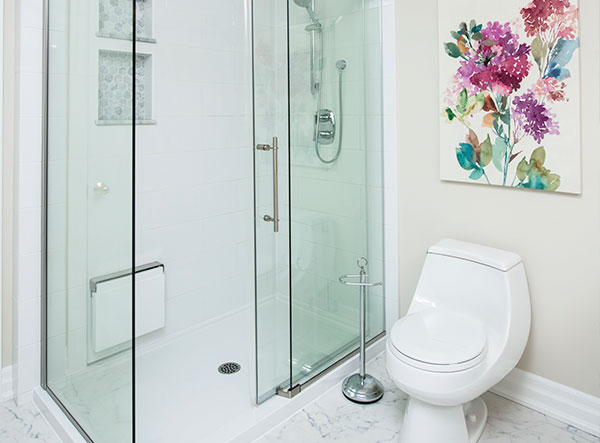
We’ve been asked to create unique tiling features, including shelving, niches, and benches, in a variety of bathroom renovations. Some clients have also requested unique features within their bathrooms, including a wood-imitation tile feature for natural aesthetics in a shower.
Shower windows with privacy glass are a popular option, too. You can easily expand a small space with some careful window placement, letting more natural light into the space. It’s also not uncommon to see skylight installations in washrooms to provide additional natural light, as well as a connection to the outdoors.
Custom tilework and a continuous seal help ensure these windows work perfectly while looking great. Privacy glass offers a must-have finishing touch.
Expanding the space of your bathroom can open up possibilities, too.
Luxury features, such as a larger tub, separate shower, or water closet are entirely possible. You can expand the size of your vanity, upgrading the materials along the way.
Another popular feature is heated flooring, perfect for stepping out of a warm shower on a cool fall or winter morning.
Other Considerations
Shower & Bath Upgrades
Luxury bathrooms provide spa-like relaxation and bathing with features such as:
- A glass surround shower with ceramic tile walls and upgraded fixtures, such as rainfall showerheads, hand showerheads, and multiple jets. Replacing a standard showerhead with a shower system is one of the easiest ways to add luxury to a shower.
- A walkthrough two-person shower. These showers have multiple shower heads so each person can control their water temperature separately.
- A Jacuzzi tub or a chromotherapy tub and shower that use coloured LED lights for relaxing colour therapy.
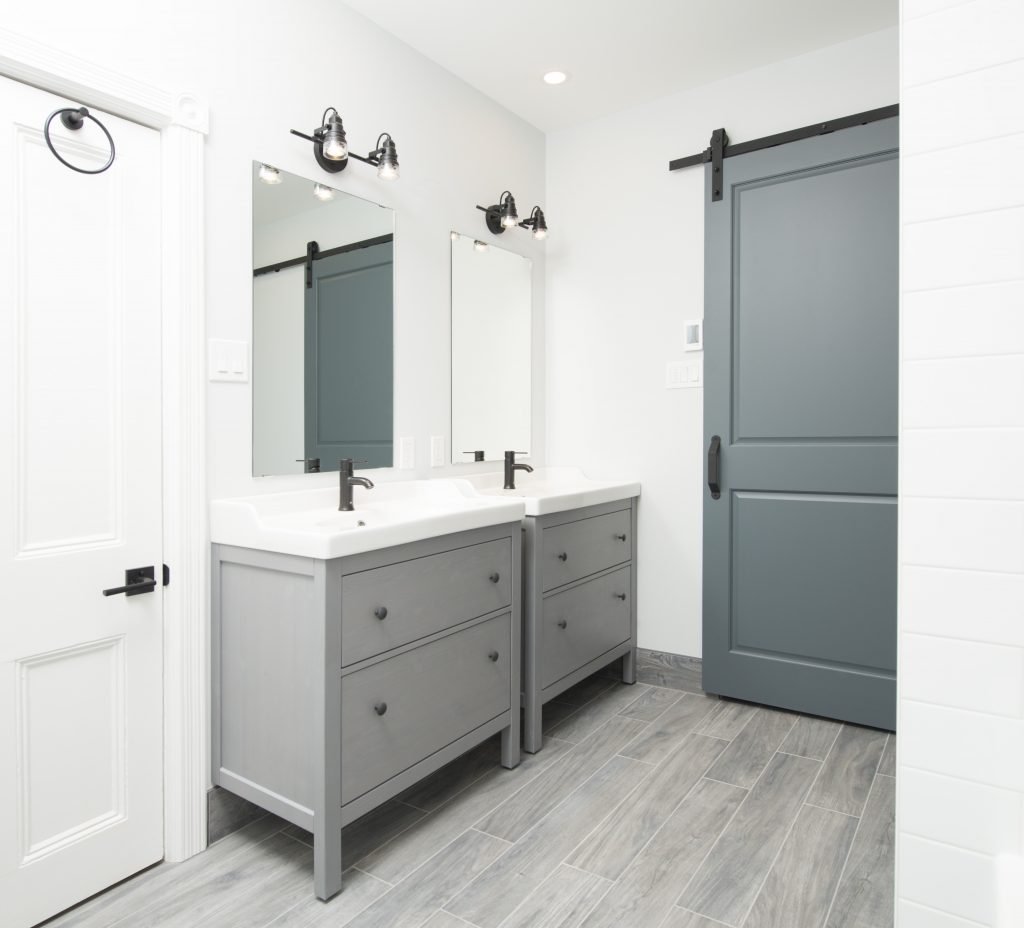
Extra Luxury Features
Additional features to improve the look and function of your bathroom include:
- Ceramic tiles.
- Heated floors and towel bars. Heated floors remove the need for heaters that take up valuable space in bathrooms.
- Spot lighting and waterproof shower lighting.
- A humidity-control exhaust fan;
- A built-in wall cabinet.
- Built-in waterproof Bluetooth speakers.
- Fine art.
- Stained glass windows.
For the ultimate luxury bathroom, consider using high-end materials such as marble, granite, travertine tile, crystal, and gold-plated finishes.
What Is the Best Colour to Paint A Bathroom?
While bathroom colours are, at the end of the day, a matter of personal preferences, there are a few rules of thumb to keep in mind.
If you’re looking to make a small bathroom look bigger, choose white for the walls. White recedes and reflects light, creating an open, expansive feeling.
What’s more, paired with features in the same colour, white offers a seamless, clean look that’s hard to beat.
Soft grays, warm beiges, and gentle blues are also safe bets. If you’re going for colours other than white, then you should consider using a tone-on-tone palette to draw the eye.
There’s no rule against bolder colours, but if you’re looking for luxurious tranquillity, these options are your best bet.
How Tilework Can Make or Break a Bathroom
Tilework, backsplash, and grouting… they all demand a keen eye and attention to detail. More than any other feature, tilework that looks or feels off can be hard to ignore in an otherwise beautiful, cohesive space.
There’s a fine line to walk with it; too complex, and you risk creating a cluttered feel. Too large, and you risk overpowering other elements.
We typically use smaller tiles for fine detail work, maintaining continuous lines throughout with impeccable installation. This is perfect for a shower niche or custom inset tile shelving that rests in the wall.
Your floor tiles should be larger, though. Large tiles have fewer grout lines, helping expand the room.
Placing floor tile patterns diagonally on a floor will also trick the eye, making any space look a bit bigger.
How Do You Make A Small Bathroom Look Bigger?
This is a big question when it comes to bathroom renovations. Making the most of a small space doesn’t take much other than some careful planning and creativity.
You might consider some of the following small bathroom reno ideas:
Outward-Opening Doors
To preserve space in your bathroom, opt for a door that opens out from the bathroom instead of into your bathroom. Pocket doors and sliding barn-style doors are great options to help save a bit of space, offering great aesthetics that can easily be customized to your taste.
Floating Vanities
The open space under a floating vanity makes a small room feel and look more open. A floating vanity gives you plenty of storage space for your bathroom essentials and provides more floor space so you don’t feel cramped.
Choose a Smaller Vanity
On the other hand, if you don’t need the extra storage space, consider a smaller vanity that won’t take up the entire width of a wall.
The open space on both sides of a small vanity will make the space feel roomier. What’s more, you’ll have more space to move around from your toilet and your shower.
Large Mirrors
A large mirror above your sink can double the size of your space visually. Consider a large framed mirror or a wall-to-wall mirror to open up your bathroom.
Bright Lighting
Bright lighting makes any space appear larger. Since bathrooms tend to have minimal natural light, it’s important to have good lighting.
If you have a window in your bathroom, replace any curtains or blinds with privacy film. This will give you the privacy you need while allowing natural light in.
You should also consider multiple light sources, such as a grid of ceiling lights paired with an edge-lighted mirror or sconces. If more lighting can't be added, use a ceiling light fixture that has multiple bulbs so the light will brighten the room in all directions.
A Glass-Paneled Shower
Replacing a shower curtain with a glass panel or a glass door will open up your bathroom, revealing the entire square footage of the room. If you want some privacy, opt for frosted or tinted glass that will still allow plenty of light to pass through.
A Shower Stall
If you’re not a bath person, you can remove the bathtub altogether and install a shower stall. Bathtubs are bulky and take up a lot of space. So by removing the tub, you will have more open floor space in your bathroom.
But if you want to keep your bath, consider a bathtub/shower combo that is strategically placed so it won’t overwhelm the rest of your bathroom space.
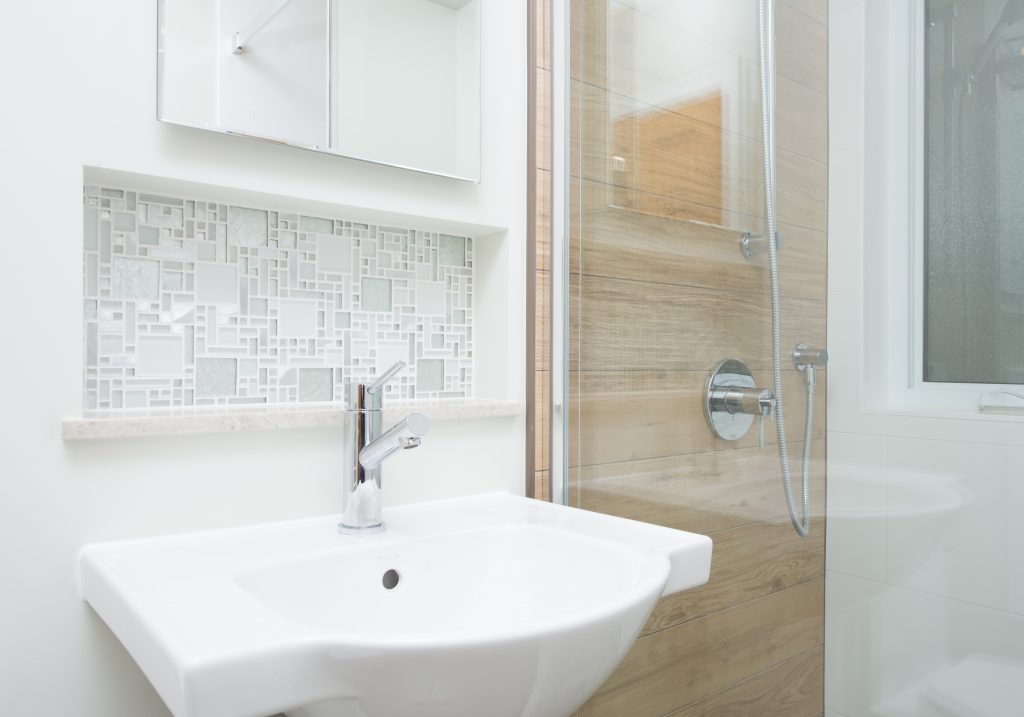
Inset Shelving
You can use empty wall cavity space to create inset storage. Whether you want open shelving or an inset cabinet, this storage won’t protrude into the room, so your bathroom will feel more open.
Emphasize the Longest Wall
Add a long element to the longest wall of your bathroom so you can draw the eye to the longest point. This could be a shelf, a rail, a band of tile, or even a stripe of paint.
Emphasize Width
For long, narrow bathrooms, visually emphasize the width instead of the length. You can visually push the walls apart with long floor tiles and a band of accent tiles on the wall or in the shower that go along the width of the room.
Bathroom renovations can easily add a touch of luxury to your home, creating a tranquil, spacious, and serene room you can escape from the day and recharge. If you’re not sure where to start or have a vision you want to bring to life, contact Sunter Homes today—we’ll help you make the most of your space.
Renovating and Designing a Kitchen with Character
We Walk You Through a Stunning Glebe Kitchen Renovation, From Start to Finish
Kitchen renovations frequently work to add functionality to the heart of the home, but how do you make it feel truly yours? There are any number of kitchen styles to catch the eye, after all. How do you find one that reflects your taste and vision?
You create it yourself, with help from experienced construction and renovation experts who take your style and vision and bring it into the real world.
At Sunter Homes, we’re always thrilled when our clients come to us with a clear vision in mind for their space. When our client approached us to renovate this kitchen in their Glebe home, they wanted to incorporate a Mexican theme while updating the space’s open concept.
Pair that with the possibilities of the home’s original 19th-century details, and we couldn’t help but get excited about this project.
“This was a very cool and exciting project for us,” said Jon Brandt, Sunter Homes’ Lead Foreman. “It was different from most jobs that we’ve done with regards to the kitchen cabinetry layout and even the overall storage space.”
Let’s take a closer look at this stunning Glebe kitchen renovation and how we brought it to life.
Style, Storage, and Function
Despite the kitchen’s original open concept, there wasn’t much practicality in its layout.
The range once sat against the wall where the pantry now rests, tucked tightly next to the arched entrance at the back of the kitchen. That wall, backing onto a beautifully tiled hall, was broken up by a second doorway.
It was very important to the homeowner to maintain that back entrance and its second-storey staircase. The already-tight arched entrance got some relief with the installation of angled base cabinets, and we were able to maintain the amount of storage with continuous shelving over the entrance.
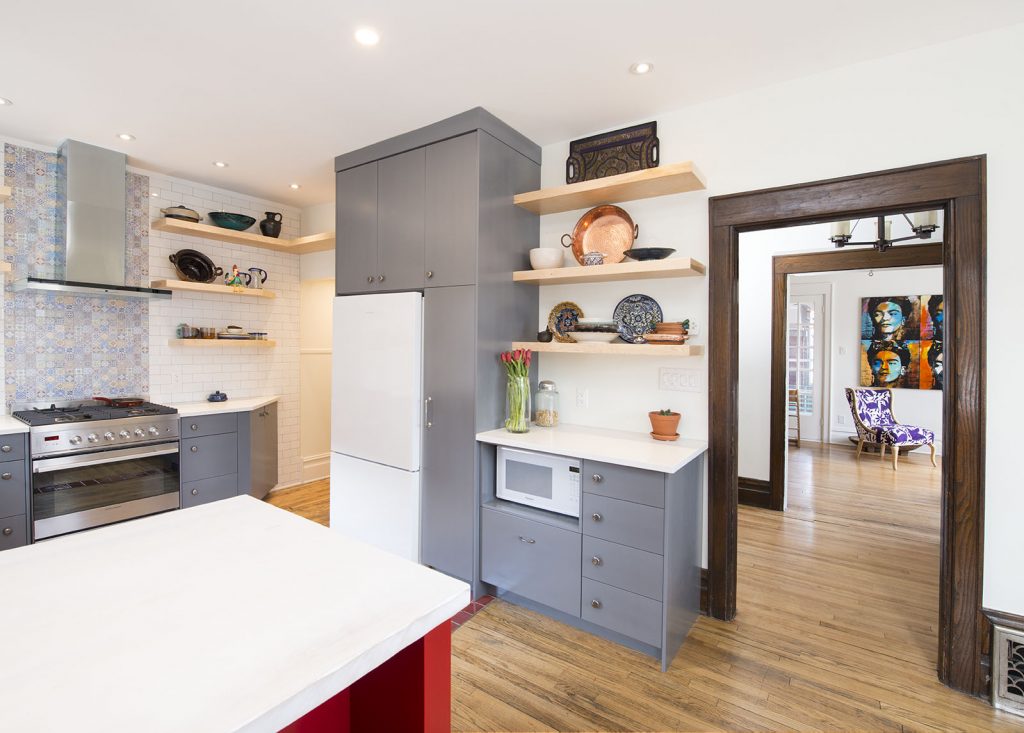
We knew that closing that second doorway would help define the kitchen more and create an opportunity to add more storage and counter space. This also gave us an opportunity to find a new home for the range, which we relocated to its current space with a beautiful new vent hood.
By moving the range and sealing off the doorway, this created a perfect space for a pull-out pantry and open shelving storage to maintain the Mexican theme. We also found a new home for the fridge, tucking in alongside the pantry.
“Typically, we’d be using upper cabinets for most of the storage,” said Jon of the storage updates.
“In this project, we used all open shelving across one of the main walls. Basically, what we did was put a piece of solid backer for the shelves across the entire back of the kitchen. We then used ¾-inch plywood tiled across the kitchen’s back, and we put in cleats to receive what would look like floating shelves.”
This plywood backing was affixed to the wall, furred to ensure it was plumb. This allowed for a deeper stud cavity, which was then insulated using 2-pound closed cell spray foam.
The finished shelving is, simply put, stunning.
“It really added to the overall aesthetics of the kitchen,” added Jon.
Unique Details, Big and Small
We always find that the details make or break a space, and there’s a particular sort of satisfaction at seeing all these details come together to create a truly beautiful space.
One key detail in this Glebe kitchen renovation? The beautifully distressed flooring.
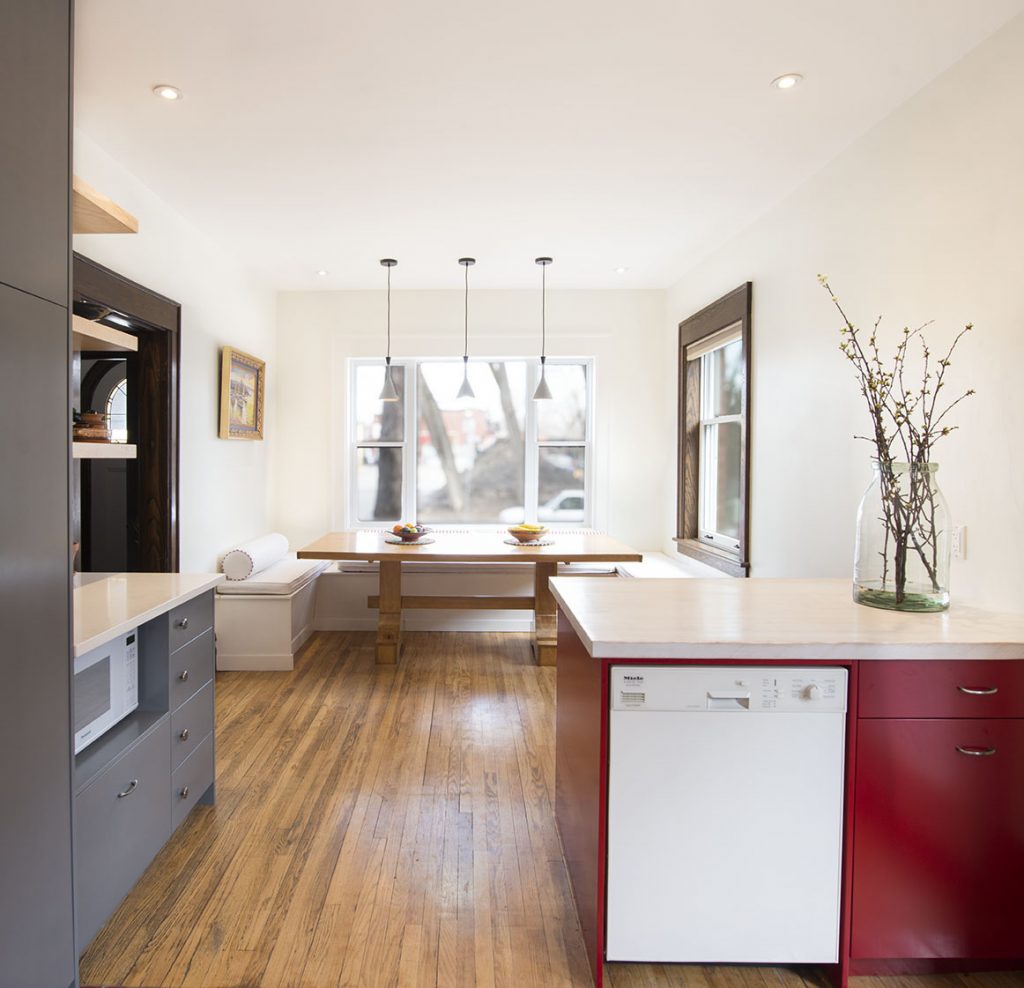
“All the floor was pre-existing,” said Jon. “The client wanted to maintain that distressed look across the hardwood floor, but we did have patches to do from where the old cabinets lay, as well as patches from the new layout.”
Quite a bit of darkening had taken place on the existing floors over the years, so it was up to us to match that distressed look on these patches.
“The new oak that we put in, we actually used a blowtorch to give it that distressed, weathered look,” said Jon. “We were able to stain and finish it from there, which matched up with the rest of the flooring quite nicely.”
The rounded archway at the kitchen’s rear also presented an opportunity to tie a few beautiful details together.
“Moving into the hallway, it has a kind of subway look with the tiling. We had to tie in our wall tiles to this archway,” commented Jon. “It was a very neat look, moving from this vintage-looking, rounded-over, old-style archway to a Mexican mosaic back wall.”
That mosaic back wall is perfectly complemented by the white subway tile that frames it and a specially-made butcher block countertop that the owners distressed using chains, screws, and nails. The exposed vent hood, too, draws attention to the inset mosaic tile.
Stunning Colours to Match Theme
Colours were important, too.
“The client with very rich colours for their cabinetry, as well as a very nice red peninsula coming off the wall with that distressed butcher block,” said Jon. “They used rich grey colours for the lowers in the kitchen.”
The clean white look of the fridge provides balance with the rich dark-grey pantry.
Keeping in line with the existing trim, we included a three-part trim assembly to match up with the early 1900s window casing.
“We brought in a lot of new, modern cabinetry, but all keeping in with the Mexican theme, which turned out very nicely, and really catches the eye with all that open shelving.”
Final Touches and Thoughts
In addition to the design and layout updates, we also replaced four old windows, one in the dining room two in the kitchen’s eating area, and one directly in the kitchen space proper, above the sink.
These windows offer plenty of natural light in what once felt like a very tight space, adding to the kitchen’s open feeling and appearance. From the big-picture layout changes to the small details and design touches, this project was a fantastic opportunity to pair our passion for exceptional quality and craftsmanship with a unique and eye-catching design.
“The client is quite happy with everything we laid out and discussed throughout the project,” shared Jon. “We came up with a few different solutions for transitions that had to be accomplished.”
It’s not every day that we get to use such an eclectic and unique design in a space, blending a mix of aesthetics that are eye-catching in their own right. We love seizing every opportunity we get to find the true potential in a space or home.
The results can be transformative, and we love the feeling of walking into a finished space almost as much as our clients do. Better still, in a home with so much character, there’s something great about being the team to get the job done and provide those finishing touches that tie everything together.
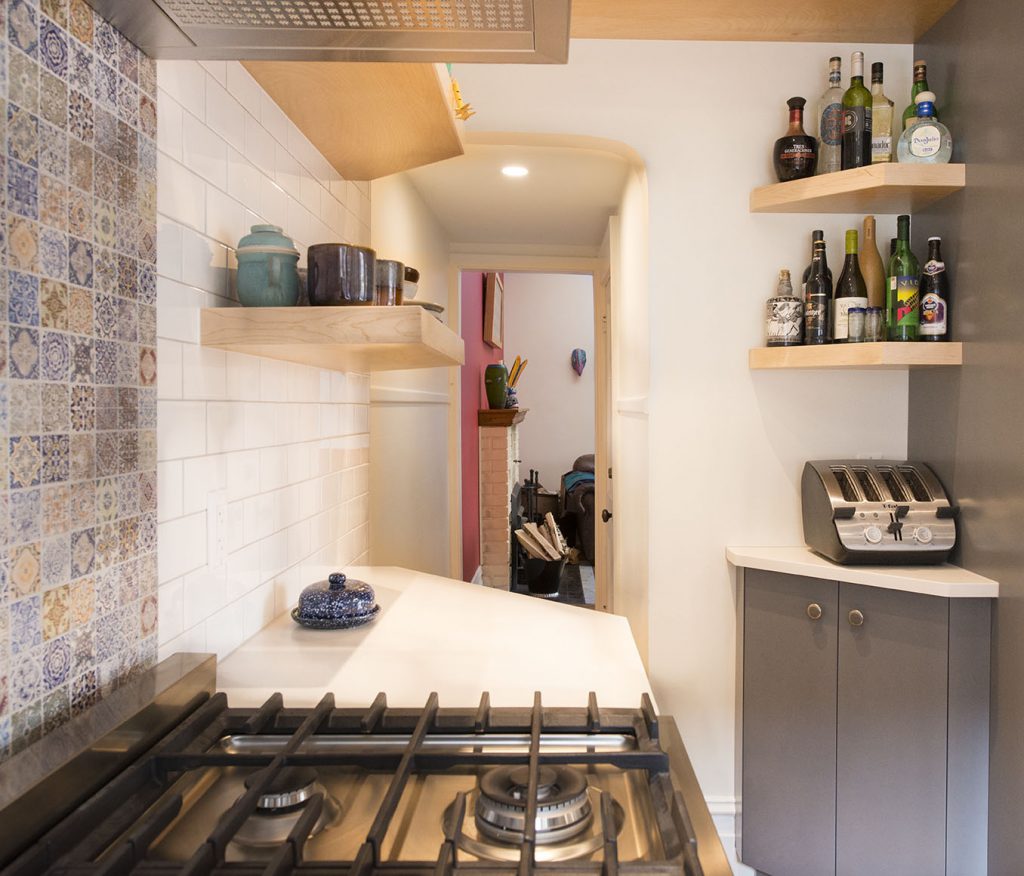
“You have a mix of the old 1900s trim with new windows, and this Mexican-themed open-concept space, which really pulled together everything they were doing with the floor,” commented Jon. “It turned out to be quite a lovely kitchen.”
We couldn’t agree more.

